Archived Feature Articles
Six Droughts between 1302 and 1306: A "1300s Event"?
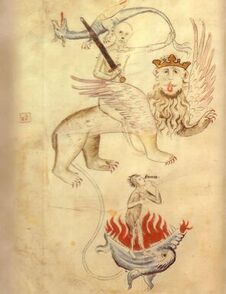
Recently coined the “1310s event," the wet anomaly of the 1310s has attracted a lot of attention from scholars. More
Pandemics, Empires, and the Lessons of History

In the 17th episode of Climate History, co-hosts Dagomar Degroot and Emma Moesswilde interview PhD candidate Emily Webster of the Department of History at the University of Chicago. Webster's trailblazing scholarship combines environmental history, the history of science, and medical history to transform understandings of disease in the British Empire. More
Historical Climate Data Can Improve Our Assessment of Future Climate Risk

Australia is a land characterised by dramatic climate and weather extremes. Currently, our understanding of the nation’s climatic history is mostly confined to official records kept by the Australian Bureau of Meteorology that begin in 1900, despite the fact that observations are available from first European settlement of Australia in 1788. More
A Hungry Winter: Colonialism in a Cold Climate
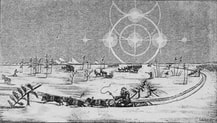
Times of hunger and starvation were part of life for northern Indigenous peoples. Dene, Inuvialuit, and Gwich’in shared lessons about planning to avoid starvation, the need to show proper respect and gratitude for good hunts and successful fishing, and how to eat after a period of hunger. More
A Conversation with Timothy Newfield: Pandemics, Climate Change, and What History Reveals About Today's Biggest Challenges
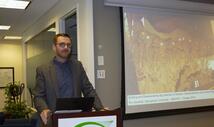
In the 16th episode of Climate History, co-hosts Dagomar Degroot and Emma Moesswilde interview professor Timothy Newfield, a climate historian and historical epidemiologist in the departments of history and biology at Georgetown University. More
A Conversation with Kathryn de Luna: Reimagining University Education for Today's Multidisciplinary Problems
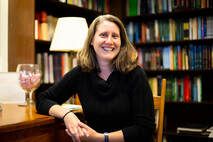
In the 15th episode of Climate History, co-hosts Dagomar Degroot and Emma Moesswilde interview Kathryn de Luna, Provost's Distinguished Associate Professor in the Department of History at Georgetown University. More
The good, bad, undefined Little Ice Age
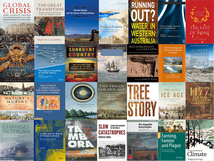
The Little Ice Age (LIA), a climatic phase that overlapped with the late-medieval and early modern periods, increasingly interests historians - academic and popular alike. Recently, they have tied the LIA to the outbreak of wars, famines, economic depressions and overall troublesome times. More
A Conversation with Joseph Manning: Climate Change in the Ancient World
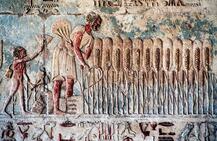
In the 14th episode of Climate History, co-hosts Dagomar Degroot and Emma Moesswilde interview Joseph Manning, the William K. and Marilyn Milton Simpson Professor of Classics at Yale University. More
A Conversation about COVID-19: Reflections on the Pandemic, the Past, and the Future

In the 13th and most unusual episode of Climate History, our podcast, co-hosts Dagomar Degroot and Emma Moesswilde share their reflections on the COVID-19 pandemic. More
The Legal Structure of the Paris Agreement – Flexible and Fit or Fragile and Fading?
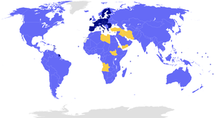
As we enter the 2020s, the backdrop of the climate crisis remains grim. Recent scientific reports tell us that global greenhouse gas emissions are increasing, not declining as they need to. More
A Conversation with Valerie Trouet and Amy Hessl: What Tree Rings Reveal About Climate Change
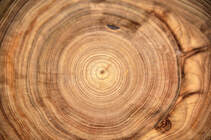
In the 12th episode of Climate History, co-hosts Dagomar Degroot and Emma Moesswilde interview professors Amy Hessl and Valerie Trouet: leading paleoclimatologists who scour the Earth to measure the growth rings in trees. More
Are Surveyors' Maps and Journals an Untapped Source for Climate Scientists?
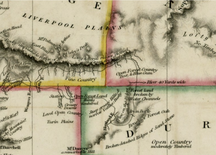
In early nineteenth century Australia, surveyors were given a near impossible task by colonial authorities. They were asked to use their expeditions to ascertain "the general nature of the climate, as to heat, cold, moisture, winds, rains, periodical seasons." More
A Conversation with Victoria Herrmann: Activism and Storytelling in a Warming World

In the 11th episode of Climate History, co-hosts Dagomar Degroot and Emma Moesswilde interview Victoria Herrmann, president and managing director of the Arctic Institute and one of Apolitical's top 100 influencers on climate policy. Dr. Herrmann's scholarship has focused on media representations of the Arctic and its peoples. More
A Conversation with Bathsheba Demuth: Histories of the Changing Arctic

In the tenth episode of Climate History, our podcast, Emma Moesswilde and Dagomar Degroot interview Bathsheba Demuth, assistant professor of environmental history at Brown University. Her new book, Floating Coast: An Environmental History of the Bering Strait is now out with Norton, and has received rave reviews in both popular and academic publications. More
A Conversation with Kevin Anchukaitis: Past Climate Change and Why It Matters Today
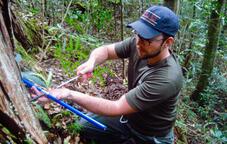
In the ninth episode of Climate History, our podcast, we relaunch with a new co-host: Emma Moesswilde, PhD Student in Environmental History at Georgetown University. For the relaunch, Moesswilde and Dagomar Degroot are joined by Kevin Anchukaitis, associate professor of geography at the University of Arizona and one of the world's leading paleoclimatologists. More
Remembering Disaster: How Qing Dynasty Records Reveal Connections Between Memory and Environment

Memory is one of the most powerful parts of the human psyche. It can help us make sense of the world around us, but it can also cloud our vision. Over long timeframes, memory can actually become embedded into a culture in ways that are difficult to comprehend. One of the complex effects of this sort of cultural memory may be the development of a culture of resilience in the face of extreme climatic events. More
Bird Migration, Climate Change, and History

On May 11, birders in 130 countries took part in World Migratory Bird Day (WMBD). This citizen science and conservation project enrolls professional and amateur ornithologists twice a year—in May and October—to record sightings of hundreds of species during their spring and fall passages through continental and hemispheric regions, or so-called flyways, across Africa, Europe, Asia, the Americas, and Australasia. More
Does the United States Need a Climate Refugee Policy?
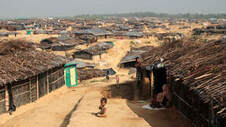
People displaced by extreme weather events and slower-developing environmental disasters are often called “climate refugees.” The term “refugee,” however, has a very precise meaning in US and international law and that definition limits those who can be admitted as refugees and asylees. Calling someone a “refugee” does not mean that they will be legally recognized as such and offered humanitarian protection. More
More: Energy History and Energy Futures
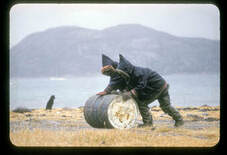
If nuclear power is to be used as a stop-gap or transitional technology for the de-carbonization of industrial economies, what comes next? Energy history could offer new ways of imagining different energy futures, but current scholarship offers linear narratives of growth toward the development of high-energy economies, leaving little room to imagine low-energy futures. More
The Nuclear Renaissance in a World of Nuclear Apartheid
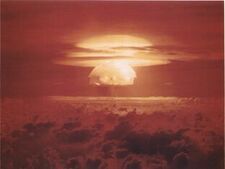
Nuclear power is back, riding on growing fears of catastrophic climate change. The climate crisis has rekindled heated debate over the advantages and disadvantages of nuclear power. However, advocates and opponents alike tend to overlook or downplay a unique risk that sets atomic energy apart from all other energy sources: proliferation of nuclear weapons. More
The Cold War Constraints on the Nuclear Energy Option
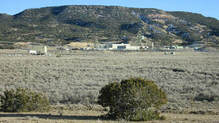
Shortly before uranium miner Gus Frobel died of lung cancer in 1978 he said, “This is reality. If we want energy, coal or uranium, lives will be lost. And I think society wants energy and they will find men willing to go into coal or uranium.” Frobel understood that governments had crunched the numbers. They had calculated how many miners died comparatively in coal and uranium production to produce energy. More
Only Dramatic Reductions in Energy Use Will Save The World From Climate Catastrophe
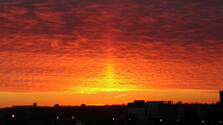
There is no longer any debate. Humanity sits at the precipice of catastrophic climate change caused by anthropogenic greenhouse gas (GHG) emissions. Recent reports provide clear assessments: to limit global warming to 1.5ºC above historic levels, thereby avoiding the most harmful consequences, governments, communities, and individuals around the world must take immediate steps to decarbonize their societies and economies. More
Did Colonialism Cause Global Cooling? Revisiting an Old Controversy
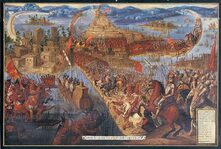
Roughly 11,000 years ago, rising sea levels submerged Beringia, the vast land bridge that once connected the Old and New Worlds. Vikings and perhaps Polynesians briefly established a foothold in the Americas, but it was the voyage of Columbus in 1492 that firmly restored the ancient link between the world’s hemispheres. Plants, animals, and pathogens – the microscopic agents of disease – never before seen in the Americas now arrived in the very heart of the western hemisphere. More
Next Generation Nuclear?
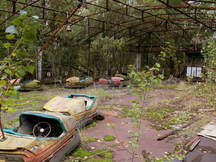
Climate change is here to stay. So too for the next several millennia is radioactive fallout from nuclear accidents such as Chernobyl and Fukushima. Earthlings will also live with radioactive products from the production and testing of nuclear weapons. The question as to whether next generation nuclear power plants will be “perfectly safe” appears to decline in importance as we consider the catastrophic outcome of climate change. More
Closing Nuclear Plants Will Increase Climate Risks

On March 28, 1979, I woke up late and rushed to catch the bus to my suburban high school in Rockville MD. So it wasn't until I found my friends clustered around the radio in the cafeteria that I learned seventy-seven miles upwind of us, Three Mile Island Reactor Unit 2 was in partial meltdown. More
Environmental Historians Debate: Can Nuclear Power Solve Climate Change?
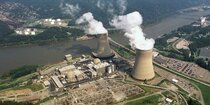
This series focuses on what environmental and energy historians can bring to discussions about nuclear power. It is a tripartite effort between Active History, the Climate History Network (CHN), and the Network in Canadian History and Environment (NiCHE), and will be cross-posted across all three platforms. The series is co-edited by a member of each of those websites: professors Jim Clifford, Dagomar Degroot, and Daniel Macfarlane. More
Reconstructing Africa's Climate: Solving the Riddle of Rainfall
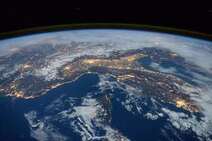
To grasp the significance of global warming, and to confirm its connection to human activity, you have to know how climate has changed in the past. Scholars of past climate change know that understanding how climate has varied over historical timescales requires access to robust long-term datasets. This is not a problem for regions such as Europe and North America, which have a centuries-long tradition of recording weather with instruments. More
Two Decades from Disaster? The IPCC's "Global Warming of 1.5° C"
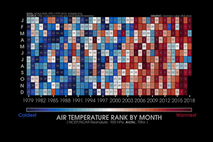
International climate change agreements have long aimed at limiting anthropogenic global warming to 2°C Celsius, relative to so-called “pre-industrial” averages. Yet in early 2015, more than 70 scientists contributed to a report that warned about then-poorly understood dangers of warming short of 2° C. Several months later, Parties to the United Nations Framework Convention on Climate Change (UNFCCC) met in Paris and reached an agreement to keep global warming to “well below” 2° C. The Paris Agreement invited the Intergovernmental Panel on Climate Change (IPCC) to prepare a special Assessment Report. More
Is There a Better Way To Do Climate History? Testing a Quantitative Approach. August 32, 2018.
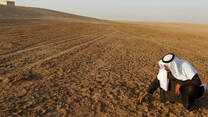
Until recently, it was notoriously difficult to connect today’s extreme weather with the gradual trends of climate change. Scientists shied away from saying, for example, that catastrophic droughts or severe hurricanes reflected the influence of anthropogenic global warming. More
Are Woodland Caribou Doomed by Climate Change? July 26, 2018.
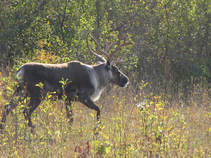
In May 2018, woodland caribou were declared functionally extinct in the United States. Across the Canadian north, woodland caribou have disappeared from roughly half their 19th century range. Is climate change dooming woodland caribou? Or are managers using climate change as an excuse to avoid making difficult policy decisions? More
A Conversation with Dr. Dagomar Degroot: Resilience and Adaptation in the Little Ice Age. June 15, 2018.

In the eighth episode of the Climate History Podcast, PhD candidate Robynne Mellor (Georgetown University) interviews Dr. Dagomar Degroot, director of HistoricalClimatology.com, about his new book: The Frigid Golden Age: Climate Change, the Little Ice Age, and the Dutch Republic, 1560-1720. Dr. Degroot is an assistant professor of environmental history at Georgetown University, where his research focuses on societal adaptation and resilience to climate change, and the environmental history of outer space. More
Ecological Militarism: The History of the Military’s Relationship with Climate Change. May 25, 2018.
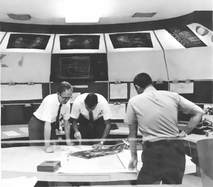
Many historians have discussed the influence of the Cold War on the development of specific disciplines within the broader field of earth science. However, few have touched on U.S. military’s study of climate change, an interest that accelerated during the Cold War. The decades-long studies sponsored by the Departments of Defense and Energy in the Cold War produced led to many attempts to transform the earth itself into a political and environmental weapon. More
Introducing the Tipping Points Project. April 30, 2018.
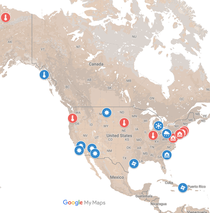
In late 2016, Randall Bass, vice provost for education at Georgetown University, asked me to help design and teach a pilot project at Georgetown University that would experiment with a new way of introducing climate change to undergraduate students. The Core Pathway on Climate Change initiative, as we came to call it, allowed students to mix and match seven-week courses - "modules" - to find their own pathway through the scholarship of climate change. More
North Atlantic Right Whales From Their Medieval Past To Their Endangered Present. March 21, 2018.
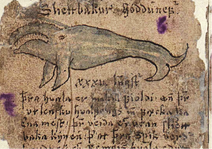
2017 was a calamitous year for the North Atlantic right whale. The final count of the 2017 "Unusual Mortality Event" was eighteen animals. Fourteen North Atlantic right whales were found dead from the Gulf of Saint Lawrence to Cape Cod between June and December, with an additional four strandings and entanglements through the year. More
A Frigid Golden Age: Can the Society of Rembrandt Teach Us About Global Warming? February 27, 2018.
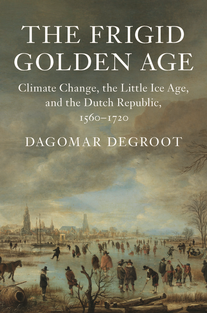
Earth’s climate is changing with terrifying speed. Humanity has strengthened a greenhouse effect that has now warmed the planet by roughly one degree Celsius. The scale, speed, and causes of today’s global warming have no precedent, but of course natural forces have always changed Earth’s climate. We now know that these changes were big enough to shape the fates of past societies. Most confronted disaster, but a few seemed to prosper in spite of – and in some cases because of – climate changes. Perhaps the most successful of all emerged in the coastal fringes of the present-day Netherlands. More
Icebreaking in the Gulf of Bothnia: A Passenger’s Perspective. January 11, 2018.
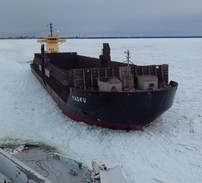
This past winter I was fortunate to join the Arctia Otso icebreaker in the Gulf of Bothnia, Finland, from March 2 to March 24, 2017. I had sailed the Northwest Passage aboard the Canadian Coast Guard ships Sir Wilfrid Laurier and Louis S. St-Laurent in 2015. Going to Finland to travel on an icebreaker for 20 days was my next big step as a Canadian scientist. More
Looking Back, Looking Forward: A Historian Goes to COP23. December 21, 2017.
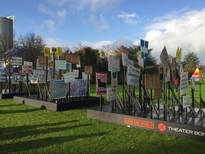
I joined the most recent UN Climate Change Conference in Bonn with a delegation from Monash University, which also included legal scholars, renewable energy specialists, and science communicators. The opportunity to observe and participate in the activities that accompany the negotiations was too good to pass up. More
Volcanoes, Climate Change, and Society: History and Future Prospects. November 30, 2017.
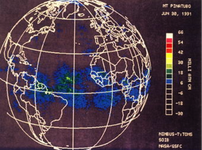
In June 1783, the residents of Kirkjubæjarklaustur, an Icelandic village, watched as the water of their local river Skaftá vanished and, days later, was replaced by a “fiery flood” of lava. They could not have imagined that this event would have consequences halfway around the globe, all the way to eastern Africa. More
New Worlds of Climate Change: The Little Ice Age and the Colonization of America. October 13, 2017.
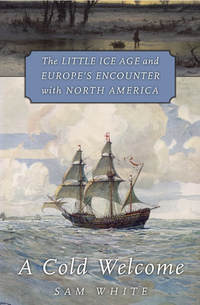
In August 1559, the aspiring conquistador Tristán de Luna y Arellano brought some five hundred soldiers and a thousand colonists from New Spain to a settlement on Pensacola Bay, Florida, which he declared “the best port in the Indies.” The viceroy of New Spain reported to the king “the port is so secure that no wind can do them any damage at all.” Even as he wrote, a hurricane was entering the Caribbean, poised to devastate Puerto Rico. A week later, it roared into Pensacola Bay. Tristán de Luna had no experience of tropical storms that could overwhelm even the strongest harbors. More
Weather, Climate Change, and Inuit Communities in the Western Canadian Arctic. October 5, 2017.
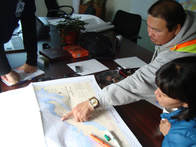
Global climate change brings with it local weather that communities and cultures have difficulty anticipating. Unpredictable and socially impactful weather is having negative effects on the subsistence, cultural activities, and safety of indigenous peoples in Arctic communities. More
“Lighthouses in the Empire”: History of Ice and Place in the “Mountains of the Moon," Uganda. September 9, 2017.
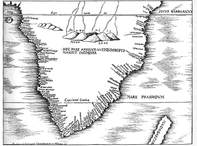
Mount Emin. Mount Baker. Mount Stanley. It is rare for a location to excite so many disparate sensibilities, but the post-colonial scholar, glaciologist, botanist, and climate scientist find themselves welcome bedfellows in the Rwenzori Mountains of central Africa. More
Will Climate Change Cause Conflict in the Arctic? Searching for Answers in the Past. July 25, 2017.
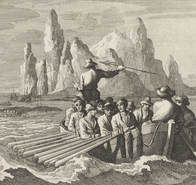
In article after article, academics, policy analysts, and journalists have told a similar story: climate change, by melting Arctic ice, is unlocking resources that could soon trigger war in the far north. They argue that the race to extract the reservoirs of oil and natural gas that lie under the vanishing ice will provoke hostilities between nations eager to claim the bonanza. More
Weather Markets: Accounting for Climate in Early American Agri-business. June 22, 2017.

When Monsanto spent $1 billion in 2013 to purchase Climate Corporation, its climate data, and its algorithms for using machine learning to predict weather, everyone from farmers to The New Yorker concluded that agri-business believed the climate science consensus: climate change is real and it introduces real risks to business. More
“Bread or Blood”: Climate Insecurity in East Anglia in 1816. May 17, 2017.
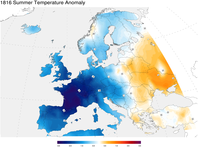
The recent bicentenary of the Year without a Summer (1816) has brought that unusual intersection of geological forces, changing climate, and human history into focus again. The radical cooling brought on by Tambora’s eruption seems especially significant as modern societies face their own dramatic climate change. More
A Conversation with Dr. Bathsheba Demuth: Capitalism, Communism, and Indigenous Communities in a Changing Arctic. April 6, 2017.

In the seventh episode of the Climate History Podcast, Dr. Dagomar Degroot interviews a fast-rising star in the field of environmental history: Dr. Bathsheba Demuth, assistant director of HistoricalClimatology.com and the Climate History Network. Dr. Demuth is an assistant professor at Brown University, where she specializes in the history of Arctic lands and seas. More
Iceberg Utilization: A Panacea for a Thirsty World? March 27, 2017.
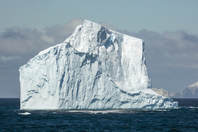
Iceberg Utilization: A Panacea for a Thirsty World? 3/24/2017 5 Comments Dr. Ruth Morgan, Monash University Picture Non-tabular iceberg off Elephant Island in the Southern Ocean. Source: Andrew Shiva, Wikipedia. Ice, or a lack of it, is an “icon” of anthropogenic climate change. Earlier this year, researchers reported that a rift in Antarctica’s fourth-largest ice shelf has accelerated and could soon cause a vast iceberg to fall into the sea. After the collapse of the ice shelf, the glaciers that once sustained it will run into the sea. More
A Conversation with Dr. James Fleming: Geoengineering and Atmospheric Science. March 9, 2017.
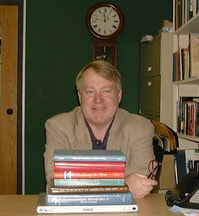
In the sixth episode of the Climate History Podcast, Dr. Dagomar Degroot interviews one of the world's best-known historians of science: Dr. James Fleming, the Charles A. Dana Professor of Science, Technology, and Society at Colby College. Professor Fleming is perhaps the leading historian of meteorology and climatology. He has degrees in astronomy, atmospheric science, and history, and he is the founder and first president of the International Commission on History of Meteorology. More
"A Grande Seca": El Niño and Brazil’s First Rubber Boom. February 7, 2017.
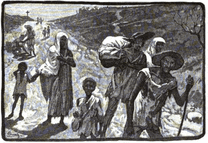
People care about climate change when it affects them. That is why Pacific islanders fear rising sea levels more than the average American, and why many who live in coastal cities fear a projected increase in tropical cyclones more than those further inland. Yet the idea that an environmental change “over there” will not affect communities “here” makes little sense. More
Climate History Network Statement on U.S. Executive Order and Climate Policy. February 2, 2017.

The Climate History Network is an organization with more than 200 members in universities and governments around the world. As an international network dedicated to the pursuit of knowledge, we are committed to the free flow of information and people. We celebrate the diversity of our members and recognize that all have an equal voice and deserve equal rights, regardless of age, gender, race, ethnicity, physical abilities, sexual orientation, religion, or country of origin. We believe that these principles are essential not only to good scholarship, but also to a healthy democracy. More
A Conversation with Dr. Sam White: Trump, the Little Ice Age, and Mapping Climate History. January 31, 2017.
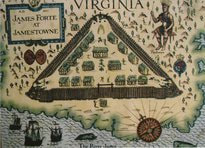
In the fifth episode of the Climate History Podcast, Dr. Dagomar Degroot interviews Dr. Sam White of Ohio State University, the co-founder and co-director of the Climate History Network. Professor White is a leading environmental historian of the Little Ice Age, a period of global cooling that lasted from the thirteenth through the nineteenth centuries. More
Teaching Climate Change by Combining the Humanities and Sciences. January 3, 2017.
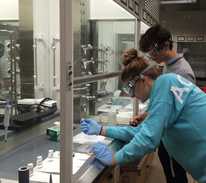
Most students at Brown University know Professor Kathleen Hess from the two-semester challenge of organic chemistry. But in a class that debuted this fall, “Exploration of the Chemistry of Renewable Energy,” Dr. Hess blended the tools of her discipline with questions of human impacts on the climate, renewable energy technologies, and the social impact of how energy is generated and used. More
Volcanoes, Comet Crashes, and Changes in the Sun: How Cooling Transformed the World. December 3, 2016.
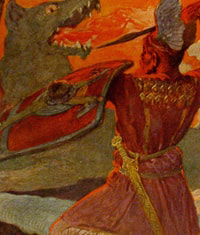
The world is warming, and it is warming fast. According to satellites and weather stations, Earth's average annual temperature will smash the instrumental record this year, likely by around 0.1° C. Last year, global temperatures broke the record by around the same amount. That may not seem impressive, but consider this: temperatures have climbed by about 0.1° C per decade since the 1980s. In just two years, therefore, our planet catapulted two decades into a hotter future. More
Towards a Messy History of Dearth and Climate in Carolingian Europe. November 14, 2016.
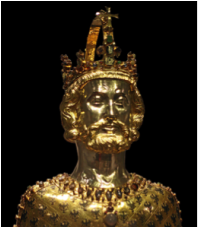
Will climate change trigger widespread food shortages and result in huge excess mortality in our future? Many historians have argued that it has before. Anomalous weather, abrupt climate change, and extreme dearth often work together in articles and books on early medieval demography, economy and environment. Few historians of early medieval Europe would now doubt that severe winters, droughts and other weather extremes led to harvest failures and, through those failures, food shortages and mortality events. More
A Conversation with Bruce Campbell. October 31, 2016.

Bruce Campbell is a highly respected historian of medieval economic history. In his long and distinguished career at Queen's University, Belfast, he has belonged to the Departments of Geography, Economic History, History, and the School of Geography, Archaeology and Palaeoecology. Recently, he published a major new book: The Great Transition: Climate, Disease and Society in the Late-Medieval World. The book transforms how historians have understood the quintessential crisis of Western society - its apparent collapse in the fourteenth century - by rooting it in environmental forces. More
A Conversation with J. R. McNeill. September 30, 2016.
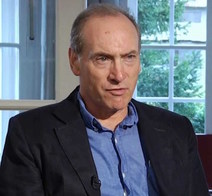
For the fourth episode of the Climate History Podcast, Dr. Dagomar Degroot interviews one of the world's leading environmental historians: Dr. John R. McNeill of Georgetown University. Professor McNeill has authored or co-authored six books, and edited or co-edited twelve. He is perhaps best known for Something New Under the Sun: An Environmental History of the Twentieth-Century World. More
What Made the Thule Move? Climate and Culture in the High Arctic. September 13, 2016.
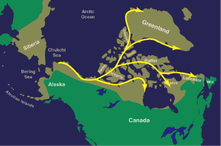
In the year 1001 CE, Leif Erikson made landfall in Greenland, and traded with people who “in their purchases preferred red cloth; in exchange they had furs to give.” The Vikings called these people Skraelings. Present-day archeologists and historians call them the Thule. At its height, Thule civilization spread from its origins along the Bering Strait across the Canadian Arctic and into to Greenland. The ancestors of today’s Inuit and Inupiat, the Thule accomplished what Erikson and subsequent generations of Europeans never managed: living in the high Arctic without supplies of food, technology, and fuel from more temperate climates. More
The “Dantean Anomaly” Project: Rapid Climate Change in Late Medieval Europe. August 27, 2016.
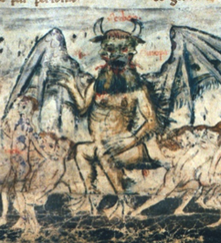
In the last years of his life, Dante Alighieri (1265-1321) was an unsuspecting witness to a rapid shift in climatic conditions that led to cooler and wetter weather all over the continent. Perhaps it was not by chance that in his Inferno, finished in 1314, the sinners guilty of gluttony and sent to the third circle of hell were punished by incessant cold rain, hail and snow, while squirming through foul-smelling mud that reminded contemporaries of the crops rotting on their fields. Across Europe, meteorological events in the 1310s caused harvest failures, floods, famines, and mass deaths. In particular, Dante’s description of the wet third ring of hell is very similar to weather conditions that caused famine in Italy between 1310-12, and offers a prominent clue the onset of the Little Ice Age left in Europe’s cultural heritage. More
A Conversation with Valérie Masson-Delmotte: Part II, IPCC and Public Outreach. August 1, 2016.
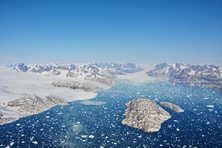
Contributing editor Benoit Lecavalier recently conducted an extensive interview with Valérie Masson-Delmotte, one of the world's leading climate scientists and the lead coordinating author for Working Group One, the Physical Scientific Basis, in the next IPCC Assessment Report. More
A Conversation with Valérie Masson-Delmotte: Part I, Climate Science. July 19, 2016.
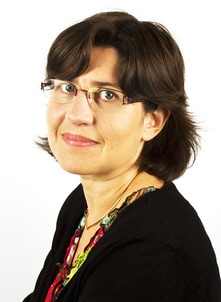
Valérie Masson-Delmotte is an internationally renowned climate scientist. She was a lead author for the "paleoclimate" section of the fourth assessment report published by the Intergovernmental Panel on Climate Change (IPCC). She was the lead coordinating author for the "information from paleoclimate archives" section in the IPCC's fifth and most recent assessment report. For the IPCC's upcoming sixth assessment report, she is a lead coordinating author for the entire Working Group One, the Physical Scientific Basis, which oversees all other scientific chapters.
At the recent Second Open Science Conference of the International Partnerships in Ice Core Sciences, in Tasmania, our contributing editor, Benoit Lecavalier, conducted a lengthy interview with Dr. Masson-Delmotte. Later this month, we will publish Part II, on public outreach on the future of the IPCC. More
At the recent Second Open Science Conference of the International Partnerships in Ice Core Sciences, in Tasmania, our contributing editor, Benoit Lecavalier, conducted a lengthy interview with Dr. Masson-Delmotte. Later this month, we will publish Part II, on public outreach on the future of the IPCC. More
Resurrecting Maunder’s Ghost: The Rediscovery of the Maunder Minimum. June 29, 2016.
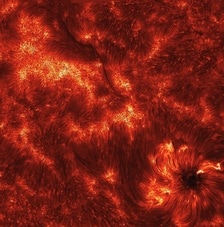
Counting in everyday life is a relatively straightforward affair; one, two, three, and on and on. Less simple is the process of reliably counting the number of sunspots on the surface of the sun. Sunspots are darkened areas on the solar surface. In Europe, people knew of their existence at least since the early 17th century, and some of the larger sunspots were probably noted long before Galileo. Elsewhere, sunspot counts were maintained for much longer. Counting these darkened areas is one of the most effective ways to establish a record of the evolution in solar behavior. Not only do sunspot observations provide crucial information about changes in the sun’s magnetic field, they strongly correlate with long-term fluctuations in the amount of energy released by the sun – the so-called solar cycle. More
What was the Maunder Minimum? New Perspectives on an Old Question. June 9, 2016.
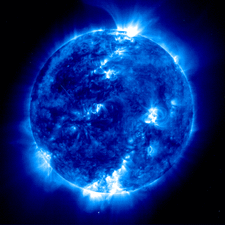
Although it may seem like the sun is one of the few constants in Earth’s climate system, it is not. Our star undergoes both an 11-year cycle of waning and waxing activity, and a much longer seesaw in which “grand solar minima” give way to “grand solar maxima.” During the minima, which set in approximately once per century, solar radiation declines, sunspots vanish, and solar flares are rare. During the maxima, by contrast, the sun crackles with energy, and sunspots riddle its surface. The most famous grand solar minimum of all is undoubtedly the Maunder Minimum, which endured from approximately 1645 until 1720. It was named after Edward Maunder, a nineteenth-century astronomer who painstakingly reconstructed European sunspot observations. More
Clio and Climate: On Saving and Researching a Climate History Archive. May 16, 2016.
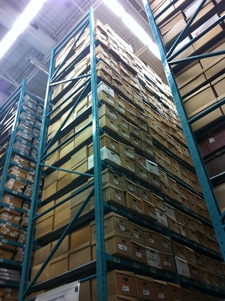
In 2008, I had a meeting at the Environment Canada headquarters in Downsview, Ontario, and afterward staff gave me a tour. Since I’m a historian, they showed me the old stuff. Down in the basement – not quite the warehouse scene at the end of Raiders of the Lost Ark, but close enough – they led me along row after row of weather observations: all of the original paper forms and registers that since 1840 had been filled out by what would eventually be thousands of observers at thousands of weather stations across Canada. Environment Canada had long ago squeezed the quantitative data they wanted from the observations, and from it created an online National Climate Data and Information Archive. That may have actually put the physical collection more at risk; a teary librarian told of worrying she would return from vacation someday and find it had been thrown out. Staff were maintaining the collection as best they could, but they knew the facility was not up to archival standards – a massive steam pipe loomed menacingly nearby – and they were concerned about the lack of a long-term plan for it. More
The Global Cooling Event of the Sixth Century. Mystery No Longer? May 2, 2016.
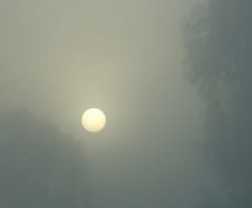
The June 1991 Pinatubo eruption in the Philippines was one of the largest volcanic eruptions of the twentieth century. It is well documented. There are living witnesses, newspaper articles, detailed surveys of the mountain before and after it blew its top, and satellite maps of the ejecta. The eruption was photographed from the ground and the air, and today you can even YouTube it. More
Contextualizing Western Drought. April 18, 2016.
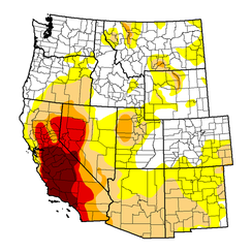
At the 2016 American Society of Environmental History conference in Seattle, I joined Linda Nash (University of Washington), Char Miller (Pomona College), and Libby Robin (The Australian National University) to contextualize Western drought in environmental, historical and cultural terms. ‘Western drought’ in this instance referred to the region that the US Drought Monitor classifies as ‘West’, where some areas are still experiencing ‘exceptional’ drought conditions. More
Did the Spanish Empire Change Earth's Climate? February 29, 2016.
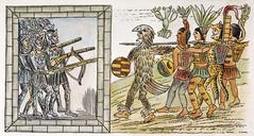
Ask most people about climate change, and you will soon find that even the relatively informed make two big assumptions. First: the world’s climate was more or less stable until recently, and second: human actions started changing our climate with the advent of industrialization. More
A Conversation about Archaeology in the Arctic. January 17, 2016.
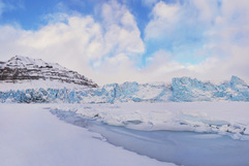
For the third episode of the Climate History Podcast, Dr. Dagomar Degroot interviews two leading archaeologists of the medieval and early modern Arctic: Dr. Thomas McGovern of the City University of New York, and Dr. George Hambrecht of the University of Maryland College Park. More
Teaching Climate History in a Warming World. December 17, 2015.
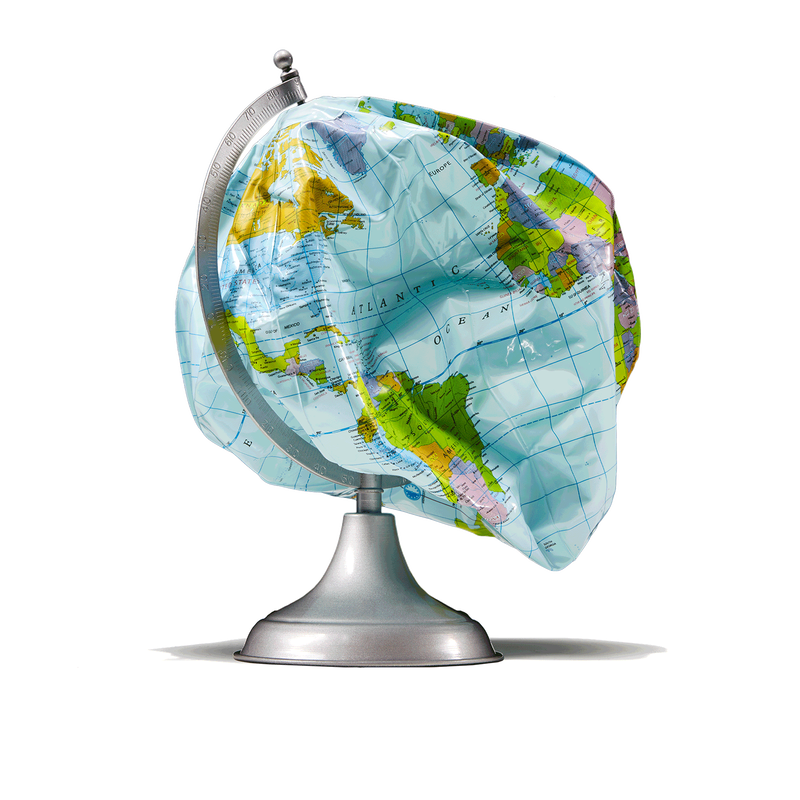
This semester, I taught my first course devoted exclusively to the environmental history of climate change. The course was, as one of my senior auditors pointed out, unusually ambitious. Luckily, I had a group of brilliant, hard-working students who embraced its challenges. Their coursework included a fifteen-page essay that connected a change in past global or regional climates to an episode in human history. They had to find a topic and then use a primary source to make an argument about that topic. They needed to support their argument using a blend of scientific and humanistic scholarship. The results were impressive, and you can read some of the abstracts here. More
Assessing the Future During COP21. November 30, 2015.
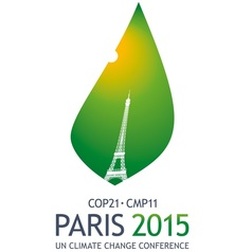
This week, roughly 40,000 delegates from 147 nations gather in Paris for the twenty-first annual "Conference of Parties" (COP21) in the fight against climate change. For the first time, participating governments will seek a legally binding agreement on mitigating and adapting to climate change. Their ambition will be to ensure that average global temperatures do not rise more than two degrees Celsius above their preindustrial averages. However, this goal now faces at least four serious challenges. More
A Conversation with Sam White. November 17, 2015.
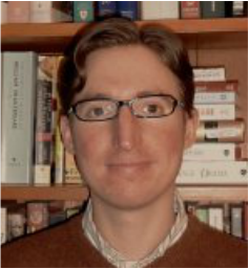
For the second episode of the Climate History Podcast, Dr. Dagomar Degroot interviews the co-founder and co-administrator of the Climate History Network: Dr. Sam White of Ohio State University. Professor White is one of the most innovative and respected environmental historians of the "Little Ice Age," a period of climatic cooling that, according to some definitions, affected most of the world from the fourteenth through the nineteenth centuries. More
Lessons From the Storm that Wasn't. October 10, 2015.
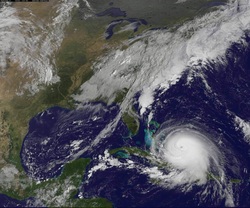
Last week, millions of people across the eastern coasts of the United States and Canada faced a frightening prospect: landfall of a major hurricane to rival Sandy, or perhaps even Katrina. At noon on October 1st, Hurricane Joaquin churned over Samana Cay, the largest uninhabited island in the Bahamas, and perhaps the first land glimpsed by Columbus in 1492. More
Whatever Happened to the Global Warming "Pause?" September 2, 2015.
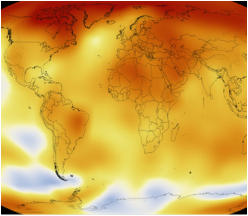
It is only September, but, absent a massive volcanic eruption or asteroid impact, 2015 will be, by far, the hottest year on the instrumental record. The culprit is a massive El Niño that is compounding the warming effects of rising greenhouse gas emissions. This year’s scorching heat will mean that the three hottest years on record will have occurred within the same five-year stretch: in 2010, 2014, and 2015. More
A Conversation with Geoffrey Parker. July 23, 2015.
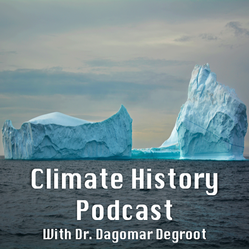
More and more people are recognizing that, to understand climate change today, we must study its past. The study of past climates has never been more popular or more interdisciplinary, and its findings are increasingly reaching the media. Policymakers are taking notice - although not always in ways we would like - and the general public is, too. In fact, this site now attracts around 100,000 visitors annually, and we hope to build on that number as we add new features and content. To that end, we are launching a new Climate History Podcast on iTunes. Within days, you will be able to search for it on iTunes, but you can already subscribe by clicking on this link. More
Is Climate Change Behind the Syrian Civil War?July 8, 2015.
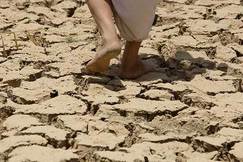
Across much of the world, climate change is making, or will soon make, environments less capable of supporting human life. Anyone who has seen the movie Mad Max will be familiar with the assumption that a hotter, and, in some places, drier climate will drive people to greater competition. When that competition is for the essentials of life, and there is not enough to go round, people resort to violence. In short: global warming could make war even more common than it is today. More
A Conversation with Miranda Massie. June 1, 2015.

Climate change might be the most important issue the world faces today. Readers of this site will know it has a rich history. It helped trigger the evolution of sentience in primates, created conditions that encouraged agriculture, and influenced the rise and fall of civilizations from Bronze Age Greece to the Ottoman Empire. Its present, as we have recently been reminded, affects us all. In just the last week, dozens have died in Texan floods, hundreds in an Indian heat wave, and thousands in a Syrian war provoked, in part, by drought. The future looks even more alarming. The IPCC and WMO have both warned that the world, and our place in it, may be almost unrecognizable in a century. So why is there no climate change museum? More
Heading North for the Arctic Winter. April 20, 2015.
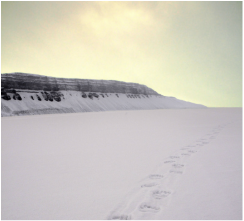
By Benoit S. Lecavalier.
In early February, I had the opportunity to gather with fellow scientists in Longyearbyen, the most northerly permanent village in the world. The town is in the Norwegian Archipelago of Svalbard at approximately 80°N latitude, slightly over a 1,000 km from the North Pole. For that reason, it is the perfect place to explore the key issues currently facing the glaciological community. The most important: how do glaciers and large ice sheets respond to climate change, and affect global sea levels? This question can only be answered by unravelling complex relationships with potentially dire consequences for our civilization. More
In early February, I had the opportunity to gather with fellow scientists in Longyearbyen, the most northerly permanent village in the world. The town is in the Norwegian Archipelago of Svalbard at approximately 80°N latitude, slightly over a 1,000 km from the North Pole. For that reason, it is the perfect place to explore the key issues currently facing the glaciological community. The most important: how do glaciers and large ice sheets respond to climate change, and affect global sea levels? This question can only be answered by unravelling complex relationships with potentially dire consequences for our civilization. More
Towards a Climate History of the Solar System. March 6, 2015.
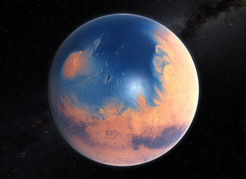
Climate historians explore how climate change influenced human history. Until now, their research has investigated environmental changes on Earth, and with good reason. Many examine how climate change affected human beings in centuries when space travel could scarcely be imagined. Others are too concerned with contextualizing global warming to consider environments beyond Earth. However, recent breakthroughs in scientific understandings of Mars’s watery past suggest that climate history can, and should, expand into the Solar System. More
Climate Change Scepticism: Interdisciplinarity Gone Wrong? February 12, 2015.
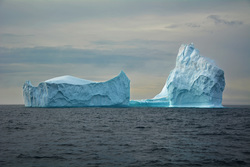
This site explores interdisciplinary research into climate changes past, present, and future. Its articles express my conviction that diverse approaches, methodologies, and findings can yield the most accurate perspectives on complex problems. To contextualize modern warming, for example, we can reconstruct past climate change using models developed by computer scientists; tree rings or ice cores examined by climatologists; and documents interpreted by historians. More
Is Arctic Sea Ice Recovering? January 10, 2015.
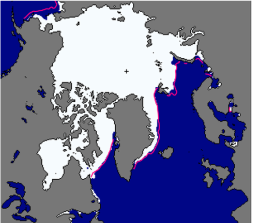
Last year might have been the hottest year ever recorded by our instruments. Average global temperatures were at least 0.27° C warmer than the average between 1981 and 2010, which was in turn up from the preindustrial norm. Overall, the past 17 years have been very warm, and since 2002 temperatures have been consistently well above the 1981-2010 average. However, that consistency is not clearly reflected in Arctic sea ice trends. In fact, the winter extent of Arctic sea ice has expanded in the last two years, seemingly defying projections of its imminent collapse. More
Climate, Crisis, and Causality in the Bronze Age.December 4, 2014.
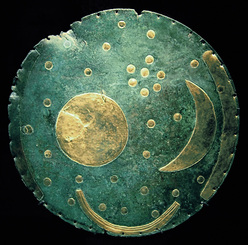
In Europe, the “Bronze Age” lasted nearly 2,000 years, from approximately 3200 BCE to roughly 600 BCE. In this period, bronze tools were forged for the first time, revolutionizing how Europeans manipulated their world and competed for resources. The first trading networks connected the continent, as navigational knowledge reached heights that Europeans would not exceed until the fifteenth century. Centralized “palace economies” flourished throughout Europe and the Middle East, in ancient civilizations we remember today: on Minoan Crete, in Mycenaean Greece, in the Mesopotamian conquests of the Hittites and Akkadians, and of course in Egypt. More
A Conversation with Dr. Michael Mann. November 17, 2014.
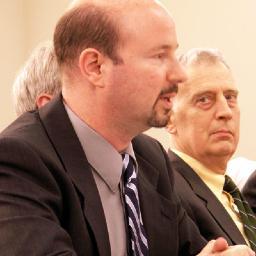
Dr. Michael Mann is one of the world's best-known climate change scholars. He is the director of the Earth System Science Centre at Pennsylvania State University, where he pioneers innovative methods for reconstructing past climate change. Mann is the author of more than 160 peer-reviewed publications and two books, and he is the founder of the popular climatology blog RealClimate. On Twitter, he is followed by nearly 23,000 people.
For these reasons, we asked Dr. Mann to give an interview that would launch a new "Interviews" section of HistoricalClimatology.com. We are grateful that he took the time to answer our questions. More
For these reasons, we asked Dr. Mann to give an interview that would launch a new "Interviews" section of HistoricalClimatology.com. We are grateful that he took the time to answer our questions. More
How Should we Measure Climate Change? October 11, 2014.
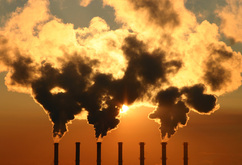
Last month, world leaders met at UN Headquarters in New York City for Climate Summit 2014. As protests raged across the globe, diplomats established the framework for a major climate change agreement next year. The aim will be to limit anthropogenic warming to no more than 2 °C, a threshold established by scientists and policymakers, beyond which climate change is increasingly dangerous and unpredictable. Just days after the 2014 summit, policy expert David Victor and influential astrophysicist Charles Kennel published an article in Nature that called on governments to “ditch the 2 °C warming goal.” More
A scientific expedition to Southeast Greenland. September 9, 2014.
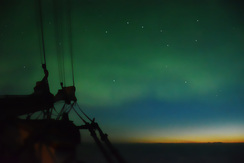
Contributing Author: Benoit S. Lecavalier
The Greenland ice sheet is melting fast, and it contains enough water to raise global sea levels by over seven meters if it were to disappear entirely. However, thousands of years ago the ice sheet was much larger, with a total of 12 metres ice-equivalent sea-level. There are many questions that remain unanswered about how Greenland lost all this ice from past to present. For example: how and where did the Greenland ice sheet lose mass? What climate history resulted in such a drastic change in the ice sheet? This summer, these were the questions that led a multidisciplinary team of geologists, geophysicists, biologists, and biogeologists to Southeast Greenland. We were embarking on an expedition to better understand its climate history, and so resolve part of a much bigger story. More
The Greenland ice sheet is melting fast, and it contains enough water to raise global sea levels by over seven meters if it were to disappear entirely. However, thousands of years ago the ice sheet was much larger, with a total of 12 metres ice-equivalent sea-level. There are many questions that remain unanswered about how Greenland lost all this ice from past to present. For example: how and where did the Greenland ice sheet lose mass? What climate history resulted in such a drastic change in the ice sheet? This summer, these were the questions that led a multidisciplinary team of geologists, geophysicists, biologists, and biogeologists to Southeast Greenland. We were embarking on an expedition to better understand its climate history, and so resolve part of a much bigger story. More
Understanding the culture of climate change. August 4, 2014.
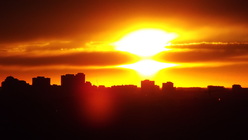
Note: originally posted on The Otter, blog of the Network in Canadian History and Environment.
Like the research that inspired it, this article is a cultural consequence of climate change.
Seven years ago, I was on a bus, reading a book about ancient climates. I looked out the window at a sunset so brilliant, it seemed to ignite Toronto's skyscrapers. I thought of global warming, and wondered: had anyone searched for connections between human history and climate change? Over the next seven years I found out that they had, but that there was still plenty of room for a new perspective. More
Like the research that inspired it, this article is a cultural consequence of climate change.
Seven years ago, I was on a bus, reading a book about ancient climates. I looked out the window at a sunset so brilliant, it seemed to ignite Toronto's skyscrapers. I thought of global warming, and wondered: had anyone searched for connections between human history and climate change? Over the next seven years I found out that they had, but that there was still plenty of room for a new perspective. More
How climate scholars can shape climate policy. July 3, 2014.
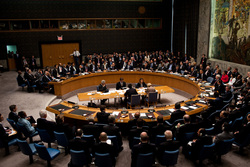
In order to keep global warming below 2° C, there is desperate need for urgency in curbing greenhouse gas emissions. However, national and international policymakers have yet to take major action. In the most recent issue of Nature Climate Change, Cambridge University geographer David Christian Rose explains why even the governments that have publicly acknowledged the threat of climate change have been so slow to address it.He then introduces practical ways for researchers to communicate more effectively to policymakers.
Most scholars understandably assume that policy should respond to the weight of evidence. To them, influencing policy is simply a matter of articulating abundant evidence with clarity. However, Rose argues that evidence derived from “scientific rationality” is just one factor among the many that influence policy. More
Most scholars understandably assume that policy should respond to the weight of evidence. To them, influencing policy is simply a matter of articulating abundant evidence with clarity. However, Rose argues that evidence derived from “scientific rationality” is just one factor among the many that influence policy. More
University acquires vast climate history archive. May 25, 2014.
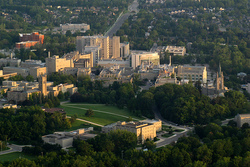
Many articles on this site outline the indispensable role of documentary evidence for testing, refining, and expanding reconstructions of past climates developed using scientific “proxy” sources and computer simulations. Documents that record past weather were written in literate societies, and are only useful in bulk. Hence, reconstructions of ancient climates cannot benefit from documentary refinement, and the same holds true for reconstructions of regions settled by non-literate societies. Nor are all documents equal: written sources that describe processes that respond to weather are useful, but only those are directly refer to weather can be reliably used to reconstruct past climate change and its influence on human activity. More
How does climate change influence warfare? April 28, 2014.

According to the most recent summary for policymakers published by the Intergovernmental Panel on Climate Change (IPCC), “climate change can indirectly increase risks of violent conflicts” by exacerbating the socially destabilizing influence of poverty and economic shocks. While the IPCC attaches “medium confidence” to this claim, it is hardly controversial. Similar conclusions were made in the IPCC’s 2007 assessment reports. Since then, several studies have established that warfare is correlated to climatic stress, although their methods ignore social and cultural contexts. Many of the world’s most advanced militaries are now at the forefront of state adaptation to global warming. The American military, for example, is not only curbing its greenhouse emissions, but is also actively preparing for conflict stimulated by future climate change. More
Does climate change cause social crisis? March 25, 2014.
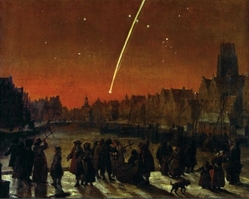
The Little Ice Age (LIA) was a period of generally cooler, and more variable, temperatures that was felt across most of the globe from the thirteenth to the nineteenth centuries. In the wake of a very cold winter in North America, and a very wet winter in Britain, it has been all over the news lately. For example, in the April issue of Foreign Affairs, Deborah Coen evaluates a major new study on the Little Ice Age by fellow historian Geoffrey Parker. In the March 23rd New York Times Sunday Review, Parker presents his “lessons from the Little Ice Age.” Two days earlier, novelist Sarah Dunant offered some of her own lessons from the period for BBC News Magazine.
The focus of each piece is the frigid seventeenth-century nadir of the LIA. For Parker and Dunant, the conclusion is simple: the LIA was disastrous for all who experienced it. Global suffering during a cooler climate foreshadowed what we can expect in a hotter world. If we wish to avoid that fate, we had better act now. More
The focus of each piece is the frigid seventeenth-century nadir of the LIA. For Parker and Dunant, the conclusion is simple: the LIA was disastrous for all who experienced it. Global suffering during a cooler climate foreshadowed what we can expect in a hotter world. If we wish to avoid that fate, we had better act now. More
Major study interprets recent climate in light of past. February 20, 2014.
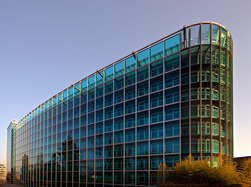
Last year the World Meteorological Organization released an important summary report on the world’s climate and how we make sense of it. The World’s Climate: 2001-2010 was unfortunately overshadowed by the publication of the Fifth Summary for Policymakers written by the UN’sIntergovernmental Panel on Climate Change. However, its conclusions are continuing to trickle through blogs and media outlets, as they shed new light on the past, present, and future of the world’s climate. Some of these conclusions will be familiar to scientists, but they are worth repeating for scholars of different disciplines, policymakers, and the general public. More
Understanding Toronto's wild weather of 2013. January 15, 2014.
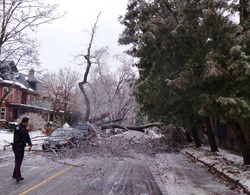
Initially published on ActiveHistory.ca
In Toronto, 2013 was a year of storms. The media storm kindled by the mayor’s chicanery was twice interrupted by meteorological storms that threatened lives and property on an unprecedented scale. On July 8th more than 100 mm of rain inundated the city in a matter of hours, triggering flash floods that caused more than $1 billion in property damage. Three days before Christmas, winter storm Gemini unleashed more freezing rain than was ever recorded in Toronto. Some 300,000 customers – representing perhaps one million people – lost power as temperatures plummeted below -10° C. This time the city’s infrastructure succumbed to the force of frozen water, and those desperate for heat too often turned to candles, generators, and other sources of deadly carbon monoxide. More
In Toronto, 2013 was a year of storms. The media storm kindled by the mayor’s chicanery was twice interrupted by meteorological storms that threatened lives and property on an unprecedented scale. On July 8th more than 100 mm of rain inundated the city in a matter of hours, triggering flash floods that caused more than $1 billion in property damage. Three days before Christmas, winter storm Gemini unleashed more freezing rain than was ever recorded in Toronto. Some 300,000 customers – representing perhaps one million people – lost power as temperatures plummeted below -10° C. This time the city’s infrastructure succumbed to the force of frozen water, and those desperate for heat too often turned to candles, generators, and other sources of deadly carbon monoxide. More
Climate history is under attack in Canada. January 6, 2014.
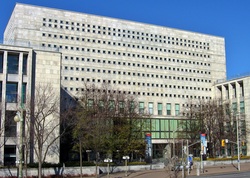
In 2012 the Canadian government infamously announced changes toLibrary and Archives Canada (LAC) that made it much harder for researchers to access their country’s documentary heritage. The LAC’s mandate was transformed: rather than acquiring and maintaining a “comprehensive” collection, it now aimed merely to gather a “representative” assembly of Canadian documents. Funding was slashed, employees were laid off, new acquisitions were paused, documents were sold to private bidders, and resources were decentralized across Canada.
In the last month, interviews with scientists by The Tyee have revealed how the conservative regime’s attitude towards the environment meant that environmental archives suffered the most. More
In the last month, interviews with scientists by The Tyee have revealed how the conservative regime’s attitude towards the environment meant that environmental archives suffered the most. More
Study applies social learning theory to climate change research. December 20, 2013.
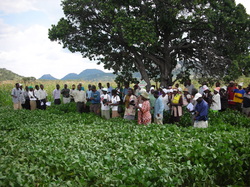
This is an educational website. Most of its articles have described the insights and methodologies of scientists, humanists and ordinary people who study climates past, present and future. Many conclude with a simple warning: to effectively address anthropogenic global warming, we need more inclusive ways to transform learning into practice. However, very few of these articles have explored how that can be done. With good reason: interdisciplinary work is never easy, and even harder is research that incorporates diverse perspectives from those closest to the effects of climate change.
A new article in by Patti Kristjanson, Blane Harvey, Marissa van Epp and Philip Thornton in the journal Nature Climate Change introduces “social learning” approaches as a way of integrating a wide range of perspectives into climate change research. More
A new article in by Patti Kristjanson, Blane Harvey, Marissa van Epp and Philip Thornton in the journal Nature Climate Change introduces “social learning” approaches as a way of integrating a wide range of perspectives into climate change research. More
Did the Little Ice Age really exist? November 24, 2013.
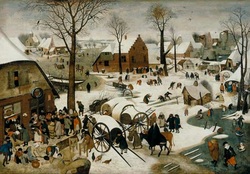
For nearly a century, interdisciplinary scholars have gradually reconstructed the existence of a so-called “Little Ice Age.” Their research is ongoing, but most now believe that average global temperatures declined by about one degree Celsius between the thirteenth and the twentieth centuries. The extent, meteorological consequences, and timetable of cooling varied from region to region, but sorting through these statistical complexities still yields an unmistakable downward trend in planetary temperatures.
Or does it? Economic historians Morgan Kelly and Cormac Ó Gráda of University College Dublin challenge the existence of a Little Ice Age (LIA) in a special issue of The Journal of Interdisciplinary History (JIH). Kelly and Ó Gráda examine recent reconstructions of European winter and summer temperatures from the medieval period to the twentieth century, but find “no statistical evidence of any major breaks, trends or cycles in European weather of the sort that one could associate with an LIA.” More
Or does it? Economic historians Morgan Kelly and Cormac Ó Gráda of University College Dublin challenge the existence of a Little Ice Age (LIA) in a special issue of The Journal of Interdisciplinary History (JIH). Kelly and Ó Gráda examine recent reconstructions of European winter and summer temperatures from the medieval period to the twentieth century, but find “no statistical evidence of any major breaks, trends or cycles in European weather of the sort that one could associate with an LIA.” More
Study provides new context for recent Arctic warming. October 27, 2013.
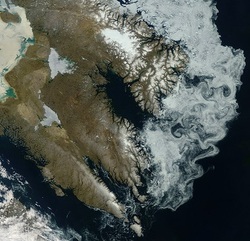
At the beginning of the Holocene roughly 10,000 years ago, 9% more sunlight reached the Northern Hemisphere than today. Very gradually, less solar radiation warmed the far north, and regional temperatures started a lengthy decline. However, at the turn of the twentieth century that trend reversed sharply, and warming has accelerated since the 1970s. Recently published in the journal Geophysical Research Letters, a University of Colorado Boulder study by lead author Gifford Miller applies radiocarbon dating to new sources in a quest for more accurate reconstructions of these climatic shifts.
Gifford and his co-authors travelled to Baffin Island, the largest island in the Canadian Arctic. The massive ice caps on the highlands of Baffin Island are frozen to relatively flat terrain, which prevents them from flowing and preserves the ancient landscape in which they formed. Changes along the fringes of these ice caps therefore reflect changes in temperature rather than other environmental conditions. The researchers collected dead tundra plants within one meter of four ice caps that are now receding by two to three meters a year. More
Gifford and his co-authors travelled to Baffin Island, the largest island in the Canadian Arctic. The massive ice caps on the highlands of Baffin Island are frozen to relatively flat terrain, which prevents them from flowing and preserves the ancient landscape in which they formed. Changes along the fringes of these ice caps therefore reflect changes in temperature rather than other environmental conditions. The researchers collected dead tundra plants within one meter of four ice caps that are now receding by two to three meters a year. More
Understanding the Fifth IPCC Assessment Report. September 27, 2013.
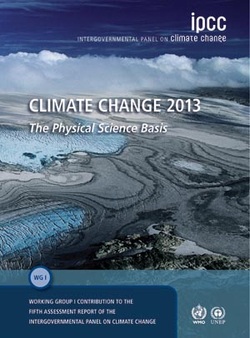
Established in 1988 by the UN and the World Meteorological Organization, theIntergovernmental Panel on Climate Change (IPCC) is a scientific body that periodically summarizes the scholarly understanding of the world’s climate. In 2007, the panel’s fourth assessment report outlined in stark terms the likelihood of anthropogenic global warming. Since then, severe storms and drought have ravaged North America, Australia and Africa, yet unusually wet, cold conditions have accompanied some European winters. Through it all carbon emissions have continued to rise, now driven largely by developing nations. Today, the IPCC’s highly anticipated summary for policymakers was finally released, in lieu of its fifth assessment report that will be published later this year. In this article, I explore this landmark report and the responses it has inspired from the perspective of a climate historian.
Initially, the most striking aspect of the IPCC’s new summary for policymakers was not its content but the media reaction. The banner at CNN is currently: “A town that’s melting.” Its subheading: “climate change already happening in Alaska town.” Additional titles announce: “climate change: it’s us,” and “Miama’s rising water,”while an opinion calls for “common sense.” Not surprisingly, among major news networks the BBC has provided the most informative analysis of the IPCC’s report, and its banner, while not as large as CNN’s, nevertheless reads: “UN ‘95% sure’ humans cause warming.” Of course, the Fox News headline is in substantially smaller font, and its conclusion is characteristically fair and balanced: “Hockey Schtick: UN report ignores global warming pause.” Worse still is coverage given by the Times of India, which features only a link in diminutive font buried at the bottom of its website. More
Initially, the most striking aspect of the IPCC’s new summary for policymakers was not its content but the media reaction. The banner at CNN is currently: “A town that’s melting.” Its subheading: “climate change already happening in Alaska town.” Additional titles announce: “climate change: it’s us,” and “Miama’s rising water,”while an opinion calls for “common sense.” Not surprisingly, among major news networks the BBC has provided the most informative analysis of the IPCC’s report, and its banner, while not as large as CNN’s, nevertheless reads: “UN ‘95% sure’ humans cause warming.” Of course, the Fox News headline is in substantially smaller font, and its conclusion is characteristically fair and balanced: “Hockey Schtick: UN report ignores global warming pause.” Worse still is coverage given by the Times of India, which features only a link in diminutive font buried at the bottom of its website. More
Discussing deglaciation in Arctic Norway. September 17, 2013.
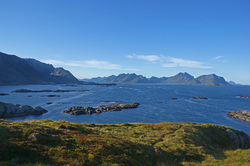
Contributing Author: Benoit S. Lecavalier.
August 18th, 2013 marked the start of a two week long workshop called the Advanced Climate Dynamics Course (ACDC). The venue was located in a former fishing village in the Vesterålen islands of Arctic Norway, a little place called Nyksund with a population of slightly over a dozen permanent residents. We were there for more than just hiking through the great outdoors, eating the local food, and performing local outreach. We were there to discuss what many call small talk: the climate. Organized by European and North American Universities, this event attracted internationally renowned researchers and graduate students, gathered there to discuss the climate dynamics of the last deglaciation. More
August 18th, 2013 marked the start of a two week long workshop called the Advanced Climate Dynamics Course (ACDC). The venue was located in a former fishing village in the Vesterålen islands of Arctic Norway, a little place called Nyksund with a population of slightly over a dozen permanent residents. We were there for more than just hiking through the great outdoors, eating the local food, and performing local outreach. We were there to discuss what many call small talk: the climate. Organized by European and North American Universities, this event attracted internationally renowned researchers and graduate students, gathered there to discuss the climate dynamics of the last deglaciation. More
New directions in climate history at the ESEH. September 4, 2013.
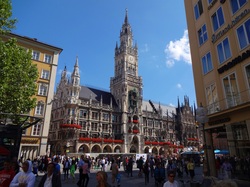
A week ago I returned from what was, surprisingly, my first trip to Germany. This year the European Society for Environmental History convened its biannual conference in Munich, a city I’ll remember for its beautiful architecture, sensible public transit and delicious beer. No fewer than fifteen climate history panels were part of the conference, and despite my best attempts I couldn't attend them all. Still, I decided to share some of what I learned (or remembered) while listening to papers that were good enough to keep me from exploring Munich. Note that for the purposes of this little article, the terms “climate history” and “historical climatology” are synonymous. More
Study Reconstructs African Climate History. July 30, 2013.
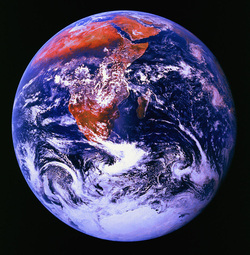
Earth’s climate has never been stable. Owing to the rising concentration of greenhouse gases in our atmosphere, it is warming now. However, other influences have caused it to fluctuate in the past, and to gain insight into the future of our climate it is critical that we understand its history. Efforts to reconstruct that past have had a western bias, owing in part to the substantial documentary legacy of European societies and their colonial descendants. Moreover, the modern interdisciplinary pursuit of historical climatology first emerged in Europe, and efforts to understand the European climate have received impressive government funding.
In recent years scholars across the globe have begun to address that imbalance. As the consequences of global warming grow increasingly obvious, international programs like the Past Global Changes (PAGES)project have gathered interdisciplinary researchers into teams dedicated to particular regions, epochs or methodologies, in the quest for a comprehensive picture of past climatic variability. A new article in the journal The Holocene presents the results of one PAGES initiative, which exhumed sources from the full breadth of Africa to incorporate the continent within the global climatic record. More
In recent years scholars across the globe have begun to address that imbalance. As the consequences of global warming grow increasingly obvious, international programs like the Past Global Changes (PAGES)project have gathered interdisciplinary researchers into teams dedicated to particular regions, epochs or methodologies, in the quest for a comprehensive picture of past climatic variability. A new article in the journal The Holocene presents the results of one PAGES initiative, which exhumed sources from the full breadth of Africa to incorporate the continent within the global climatic record. More
Study: predator-prey relationship affects carbon cycle. June 18, 2013.

When most people conceive of the causes – or “forcing” – behind climate change, they think of volcanoes, solar radiation and, increasingly, human industry. Those who are more informed might also imagine forests, or perhaps the noxious emissions of 1.3 billion cows. However, pioneering research has increasingly revealed that biological activity on small scales, replicated in countless interactions across the planet, can yield equally substantial influences.
Carbon is, of course, both a fundamental component of life and a major contributor to global warming. Countries across the world have invested billions in storing surplus carbon, yet lucky for us plants and animals also absorb carbon in vast quantities. More
Carbon is, of course, both a fundamental component of life and a major contributor to global warming. Countries across the world have invested billions in storing surplus carbon, yet lucky for us plants and animals also absorb carbon in vast quantities. More
Studies: modern glacier retreat unprecedented. May 19, 2013.
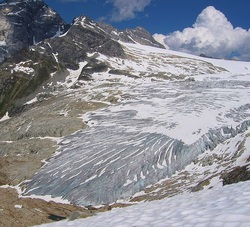
Nearly 70% of the world’s freshwater – over 24 million cubic kilometers - is frozen, locked within ice caps, permanent snow, or glaciers. That ice holds less than 2% of Earth’s total reservoir of water, yet sea levels would rise by hundreds of feet if it all melted. A complete thaw is not on the horizon, but even sea level rises of several feet would render many coastal cities uninhabitable. Hence, although glaciers only constitute 1% of the world’s total land ice, we desperately need studies that measure their response to global warming.
Recent research by lead author Alex Gardner of Clark University revealed that glaciers lost an average of 260 billion metric tons of ice annually between 2003 and 2009. That alarming conclusion suggests that, during the study period, glaciers contributed as much to sea level rises as the Arctic and Antarctic ice sheets combined. While this information is valuable, it requires the context provided by research into the deeper past, without which the recent retreat of glaciers can be dismissed as just another quirk of short-term variations in weather. More
Recent research by lead author Alex Gardner of Clark University revealed that glaciers lost an average of 260 billion metric tons of ice annually between 2003 and 2009. That alarming conclusion suggests that, during the study period, glaciers contributed as much to sea level rises as the Arctic and Antarctic ice sheets combined. While this information is valuable, it requires the context provided by research into the deeper past, without which the recent retreat of glaciers can be dismissed as just another quirk of short-term variations in weather. More
New methods link atmospheric CO2 to climate change. April 27, 2013.
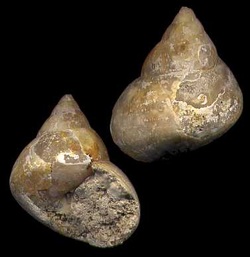
When researchers study past climates to better understand modern warming, they often seek “climate analogues,” times when climatic variables resembled those we face today. According to celebrated climatologist André Berger, problems emerge when we start asking which variables render climates analogous. Is it temperature? Sea level? Patterns of vegetation? Forcing influences? Unfortunately for climatologists and climate historians, superficially similar climates can emerge from very different stimuli, and they can be expressed in very different ways in different places.
Almost 34 million years ago, the world’s climate changed and, as it did, ice sheets extended across the Antarctic. Ice reflects sunlight better than water, and the dramatic expansion of Antarctic ice stimulated a long-term decline in ocean temperatures. Despite recent warming, the colder climate that emerged from this Eocene–Oligocene transition actually resembles our own. We live in an icy – if thawing – climate, and global warming is alarming not because it imperils life on Earth, but because it threatens how modern life has adjusted to regional environments. Just as polar bears need ice to hunt, our civilization requires moderate, predictable temperatures for the agricultural monocultures that sustain it. More
Almost 34 million years ago, the world’s climate changed and, as it did, ice sheets extended across the Antarctic. Ice reflects sunlight better than water, and the dramatic expansion of Antarctic ice stimulated a long-term decline in ocean temperatures. Despite recent warming, the colder climate that emerged from this Eocene–Oligocene transition actually resembles our own. We live in an icy – if thawing – climate, and global warming is alarming not because it imperils life on Earth, but because it threatens how modern life has adjusted to regional environments. Just as polar bears need ice to hunt, our civilization requires moderate, predictable temperatures for the agricultural monocultures that sustain it. More
New studies explore social context of natural disasters. April 9, 2013.
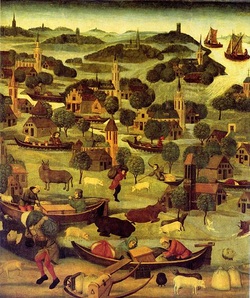
The journal Environment and History has recently published a special issue devoted to historic floods in medieval and early modern Europe. In an editorial introduction, historian James Galloway explains that studies examining environmental disasters have multiplied since the 1980s in the kind of history that seeks connections between the human and non-human worlds. Increasingly, natural disasters are not perceived as unavoidable transgressions on society – “acts of God” - but, instead, as a product of a particular society. Natural catastrophes are, in fact, “social phenomena” located at the intersection of a society’s unique pattern of vulnerability and resilience in its relationship with the nonhuman world. The papers in the latest issue of Environment and History reconstruct past natural disasters, consider the interactions between them and past societies, and measure the relevance of such research in an era particularly prone to environmental catastrophe.
Historical climatologist Christian Rohr begins the issue with an innovative paper that explores tangled relationships between floods and urban economies on the upper Danube between the fourteenth and seventeenth centuries. Using an impressive variety of documentary evidence, Rohr reveals that medieval and early modern city communities understood the perpetual risk of flooding. In fact, many within these communities actually benefited from it: carpenters, for example, gained a sizable share of their annual income from the repair of flood damage. More
Historical climatologist Christian Rohr begins the issue with an innovative paper that explores tangled relationships between floods and urban economies on the upper Danube between the fourteenth and seventeenth centuries. Using an impressive variety of documentary evidence, Rohr reveals that medieval and early modern city communities understood the perpetual risk of flooding. In fact, many within these communities actually benefited from it: carpenters, for example, gained a sizable share of their annual income from the repair of flood damage. More
Study: volcanic eruptions diminished recent warming. March 3, 2013.
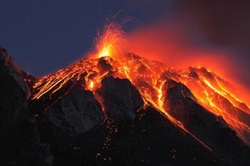
Average global temperatures fluctuate in response to many different influences, and while some of these "forcings" are now affected by humans, others are shaped entirely by natural causes. Articles on this website have considered whether sulfur released into the atmosphere by volcanic eruptions stimulated the prolonged cooling of the so-called Little Ice Age in the centuries before 1850. Deposited in the stratosphere, volcanic sulfur dioxide interacts with other chemicals to form sulfuric acid and water, which in turn reflects solar radiation. Other articles on the site have introduced research revealing that the reflective properties of man made aerosol pollution in the twentieth century likely sheltered swaths of North America and, later, parts of China from the influence of global warming. More
Debate tests accuracy of tree ring data. February 6, 2013.

For those interested in climates past and present, trees do more than absorb carbon dioxide. Seasonal changes in cellular growth near the bark of a tree leave rings buried in its wood. The size of those records is tied to the growth of the tree; a good year will imprint a thick ring, while hard times leave mere slivers. Anyone who's ever owned a plant will understand that most trees need abundant sun, moderate temperatures and sufficient water. Of course, gardeners are aware that different plants - from weeds to trees - respond to different conditions. By researching the peculiar tastes of various tree species climatologists can use tree trunks to reconstruct yearly fluctuations in temperature and precipitation, sometimes over hundreds of years. More
Climate change research: now for historians. January 13, 2013.
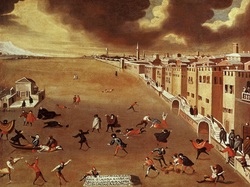
Most scholars study something important to their societies. The walls of the ivory tower are, in fact, quite porous. It's no surprise that the genre of history that deals with environmental issues - environmental history - grew out of the debates surrounding the use of DDT. No surprise, either, that academics within disciplines from anthropology to economics are increasingly considering the influence of climate change just as the effects of global warming are becoming painfully obvious. Now more than ever, research into past climates is not just for scientists.
If environmental history grew steadily in the decades since its conception, so too did its semi-autonomous, interdisciplinary cousin: climate history, or historical climatology. This site regularly describes some of the more interesting work published by historical climatologists, before considering how it can reframe today's environmental issues. More
If environmental history grew steadily in the decades since its conception, so too did its semi-autonomous, interdisciplinary cousin: climate history, or historical climatology. This site regularly describes some of the more interesting work published by historical climatologists, before considering how it can reframe today's environmental issues. More
Climate change and ice cover in one Arctic lake. December 16, 2012.
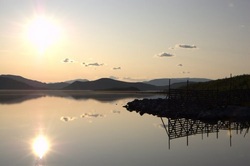
Average air temperatures have risen across much of the globe in recent decades, nowhere more quickly than in the Arctic. However, the consequences of rapid warming for the environmental conditions that shape life in the Arctic remain poorly understood. A new article published in the journal Climatic Change by an international team of scholars under lead author Ruibo Lei uses 44 years of ice data fromLake Kilpisjärvi, in the Northwestern fringe of Finland, as a case study to improve our understanding of recent shifts in Arctic ice cover. Because the workings of lake ice can be easily related to large-scale atmospheric changes, past ice records can shed new light on local and regional climate change. Extensive regional ice monitoring dates back to 1964, and the remoteness of the lake ensures that human influences other than anthropogenic change likely had little to no impact on the ice data. More
Study: drought triggered Mayan collapse. November 9, 2012.
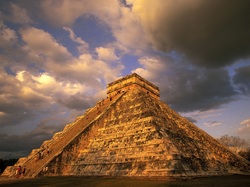
For seven centuries the Classic Maya dominated central America, developing a unique society that in its complexity rivaled the greatest civilizations of contemporary Asia or Europe. For over three decadessome scholars attempted to link the gradual collapse of Mayan population centers between 800 and 1000 CE to sustained drought influenced by a change in the regional climate. However, their conclusions remained controversial, in part because climatic reconstructions compiled usingpaleoclimatic records were not yet sufficiently precise. More recent articles supported the drought hypothesis for the collapse of Mayan Civilization, but environmental circumstances like human-caused deforestation complicated attempts to piece together what happened near the most important cities of Mayan antiquity. More
Study: methane emissions linked to human activity for millennia. October 6, 2012.
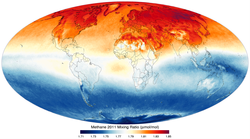
Methane in the upper troposphere, 2011.
Using new data from the NEEM and EUROCORE ice core drilling programs, researchers from the Niels Bohr Institute have published a study in the journal Nature that reconstructs how different natural and anthropogenic activities contributed to methane emissions over the last two millennia. An important but frequently ignored greenhouse gas, methane is released into the troposphere from three sources: biogenic (wetlands or rice paddies, for instance), geological (for example, mud volcanoes) or pyrogenic (including biofuel or coal burning). Different methane sources have different isotopic signatures, meaning that scientists can use ice cores to trace how and why methane rose and fell over time. More
Pollution cooling summers in one part of China. September 30, 2012.
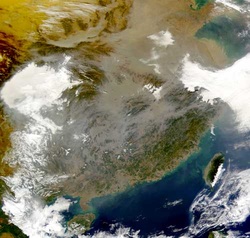
Is the globe warming or is the climate changing? Policy makers and media outlets have long misunderstood the relationship between "global warming" and "climate change" as the terms are used in scientific literature, creating a false but popular dichotomy in which the planet cannot be warming if the climate is changing. Climate change, after all, must refer to both cooling and warming, but how can the planet be warming if both trends are happening at the same time? With popular confusion in mind, it is important for scholars of climate and its history to remind the public that, in scientific literature, climate change is the consequence of global warming. The world is getting hotter, but the warming influence of greenhouse gases, coupled with other pollutants, has set in motion a complex chain of atmospheric and oceanic changes that sometimes have surprising consequences.
Some of those consequences are explored in a new study written by lead author Bian He for the journal Climatic Change. Over the past decade several studies have uncovered the existence of a pocket of summer climatic cooling within rapidly warming East Asia between 1951 and 2000. More
Some of those consequences are explored in a new study written by lead author Bian He for the journal Climatic Change. Over the past decade several studies have uncovered the existence of a pocket of summer climatic cooling within rapidly warming East Asia between 1951 and 2000. More
Study: after initial extinction, biodiversity increases in warmer climates. Sept 12, 2012.
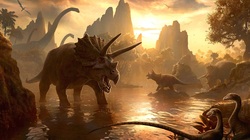
On a large scale, biodiversity decreases at a predictable rate with an increase in latitude. In other words, more species can live in hot climates than in cold climates. Strangely, analysis of fossil records dating back 540 million years previously suggested that biodiversity decreased as climates warmed. Now, a study published in the journal Proceedings of the National Academy of Sciences has used newly standardized data chronicling marine invertebrate biodiversity to refine and, in fact, contradict those earlier results. Biodiversity, in turns out, generally increases in climates marked by relatively stable warmth. Lead author Peter Mayhew and his fellow researchers are careful to note that the relationship between climatic shifts and biodiversity is not deterministic: periods of unusual biodiversity like the late Jurassic or early Cretaceous coincided with relatively cool temperatures owing to variables like sea level changes or continental dispersion. Moreover, the eventual trend towards greater biodiversity in warmer climates, which often took millions of years, was typically preceded by an initial extinction event. More
New evidence links solar activity to winter severity. August 26, 2012.
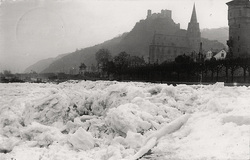
The best climatic reconstructions are compiled at the intersection of the sciences and the humanities. Climatic data from scientific "proxy data," like ice cores or tree rings, can be refined using weather descriptions in historical evidence written by contemporary observers. The most useful documents for the reconstruction of past climates are often the most simple and the easiest to quantify. In the straightforward weather observations provided in ship logbooks or financial accounts, for example, relationships between weather, its environmental consequences, and human observers are often the clearest. Describing a simple environmental phenomenon with an easily identifiable meteorological cause, easily quantifiable records of river freezing are especially valuable. Used for decades by Dutch scholars, they have recently been applied to a central European context by an international team of researchers under Frank Sirocko of Johannes Gutenberg University. More
Studies: atmospheric CO2 concentration drives climate change. August 2, 2012.
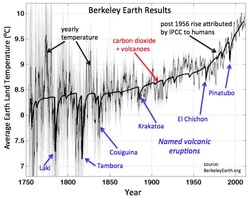
Despite its catchy name, Marine Isotope Stage 11 (MIS 11) is not a science fiction film but, instead, a climatic regime similar to our own that that endured from 424,000 to 374,000 years ago. During MIS 11 the world's orbital configuration, atmospheric greenhouse gas concentration and fauna resembled their current state, encouraging researchers to develop high-resolution climatic reconstructions of the period. Nevertheless, despite the quality of existing climatic reconstructions uncertainty has persisted regarding the major drivers of contemporary climate change. A new study by lead author S. Das Sharma, published in latest issue of the Journal of Geophysical Research, employs novel statistical techniques to interpret 15 climatic indicators - like pollen records - in a quest for the primary cause of the warmer MIS 11 climate. According to the authors, the results "unequivocally" establish that atmospheric carbon dioxide was the key influence behind the warmer climate of the period, with important consequences for our understanding of the relationship between anthropogenic greenhouse gasses and today's changing climate. More
Does tree ring data reflect global cooling? July 9, 2012.
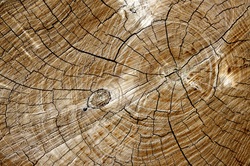
Credit: Institute of Geography, JGU
In a study published in the journal Nature Climate Change and sure to be widely misinterpreted, a team under lead author Jan Esper has used new dendrochronological (tree ring) data from sub-fossil pine trees to reconstruct Finnish temperatures back to 138 BC. The results faithfully record past climatic fluctuations from the Roman warm period to the Little Ice Age, but they also seem to reflect a surprising trend: the cooling of European temperatures by 0.31 degrees Celsius for each of the last two millennia prior to the onset of anthropogenic climate change. Tree ring data is derived from measurements of the distance between growth rings in the trunk of a tree. It not only reflects variability in temperature but also precipitation, with some trees responding more strongly to a particular meteorological variable than others. Researchers must take this into account, and since the 1970s historical climatologists have carefully reconstructed Scandinavian temperatures using dendrochronological data. However, the new study appears to reveal a general cooling trend missing from previous records, with results now fitting coupled general circulation models. Esper and his co-authors conclude that cooling over the past two millennia was driven by a gradual reduction in solar radiation driven by changes in Earth's orbit around the sun. According to Esper, these findings are "significant with regard to climate policy, as they will influence the way today's climate changes are seen in the context of historical warm periods." Sure, but how? More
Studies explore social and cultural consequences of extreme weather. June 26, 2012.
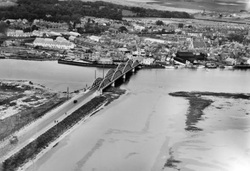
Two new studies in the journal Climatic Change explore relationships between extreme weather events and socio-cultural responses in early to mid-twentieth century Britain. Increasingly, projections of a warmer future and its ramifications have prompted interdisciplinary scholars to contribute the insights of ever more diverse disciplines to the quest for a better understanding of how life - especially human life - copes with climatic fluctuation. Consequently, the first article, by Mike Hulme of the University of East Anglia, considers how to make sense of climate in different disciplines by examining cultural responses to a heatwave that lingered over Norfolk in July, 1900. Hulme describes how the heatwave can be traced in three different worlds unlocked by three different disciplines: that which was imagined by contemporary author H.P. Hartley, that which was lived historically in Victorian Norfolk, and that which is quantified by climate scientists. More
Study refines how climatologists use past to predict future. June 17, 2012.
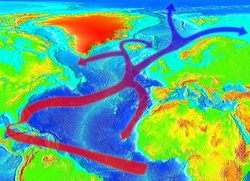
Global warming is understandable only in the context of the past. Without a record of temperatures in the recent past there would be no way to measure change in global temperatures; without historical evidence there would be no way to grasp how humans respond to climatic fluctuations; without an analysis of the (often) distant past there would be no way to develop the models that help predict the possible nature of a warmer climate. The Eemian Warm Period, a 10,000-year epoch that began about 125,000 years ago, is often used to design climatic models. With temperatures several degrees warmer than they are today, much of Greenland's ice sheet had melted, and Earth's sea level had risen substantially. Now, German scholars Henning Bauch, Evgeniya Kandiano and Jan Helmke have published an article in the journal Geophysical Research Letters that reveals a critical difference between the Eemian Warm Period and the hotter climate of the near future. More
Study reconstructs millennium of Australian climate. May 23, 2012.
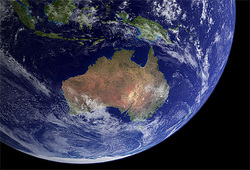
A team of researchers under historical climatologist Joëlle Gergis has published a new article in the Journal of Climate that uses data from tree rings, ice cores, coral and 24 other natural indicators to reconstruct a millennium of Australian climatic history. The study, the Australasian region’s contribution to the fifth IPCC assessment report, collects and synthesizes the work of more than 30 scholars, conducted over many decades. Although plentiful records of past climatic fluctuations are available for the Northern Hemisphere over the past two millennia, the limited availability of long proxy records for the Southern Hemisphere has undermined attempts at global reconstructions. Uncertainty continues to surround how periods of prolonged warmth or cold, like the Medieval Climatic Anomaly (MCA, also called the Medieval Warm Period) or Little Ice Age (LIA), were expressed globally. Australian researchers have now revealed that a warmer climatic regime peaked in Australia just after its maximum in Europe, while demonstrating that Australia also experienced the cool weather of the Little Ice Age, even if its coldest periods were felt in different decades. The Australian record is part of the Past Global Changes Regional 2K (PAGES) initiative, which endeavours to reconstruct the past 2000 years of climatic fluctuation in every part of the world to minimize uncertainty in projections of global warming. Ultimately Gergis concludes that the study “revealed that recent warming [of 0.9 degrees Celsius since 1960] in a 1000 year context is highly unusual and cannot be explained by natural factors alone.” The full article can be found here.
Article links climatic shifts to smallpox in the Great Plains. May 8, 2012.
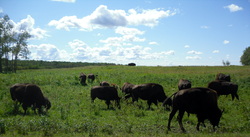
In the latest issue of Environmental History environmental historian Adam Hodge argues that the climatic fluctuations of the Little Ice Age affected the productivity of the Great Plains grasslands, bison populations and, in turn, how migratory Native American tribes experienced smallpox. Between 1780 and 1782 smallpox killed more than half of natives living in the Great Plains, with mortality rates rising to 80% in the crowded villages of the Mandans, Hidatsas and Arikaras. While the historical spread of Old World diseases through densely packed, largely sedentary New World settlements should come as no surprise, high mortality rates among migratory tribes with low, scattered populations is more baffling. Trade and warfare had carried smallpox to the Great Plains by 1780, but Hodge argues that to understand why smallpox ravaged migratory tribes we need to understand their relationships with the environment of the Northern Plains. Using scientific and documentary evidence Hodge reconstructs how the climate of the Little Ice Age and the increased incidence of La Nina events influenced the extraordinary variability of seasonal precipitation and temperature across the Great Plains from the late 1770s to the early 1780s. According to Hodge, by stressing bison numbers, diminishing herd sizes and changing migration patterns the unreliable weather stimulated starvation among migratory native tribes. Starved individuals searched more widely for food, and increased interactions between native groups encouraged the spread of smallpox. Meanwhile, starvation compromises immune systems, rendering many among the migratory tribes more vulnerable to the disease. Climatic fluctuations did not cause the smallpox epidemic of 1780-1782, but they did affect why, according to historian Walter Prescott Webb, “the buffalo and the Plains Indians lived together, and together passed away.”
Study: aerosol pollution delayed warming in Eastern US. April 26, 2012.
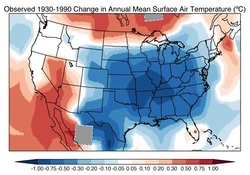
A team of scientists at the Harvard School of Engineering and Applied Sciences has discovered that particulate pollution over the eastern United States created a “warming hole” that delayed the onset of global warming in the late twentieth century. Unlike greenhouse gases, aerosol pollution has a very short lifespan, and its distribution across the earth is uneven. Until the Clean Air Act was passed in 1970 and strengthened in 1990, aerosol particles cloaked most of the central and eastern United States. Not only do aerosol particles reflect incoming sunlight, cooling surface temperatures, but they also act as nucleation sites for cloud droplets, exacerbating the cooling by reflecting even more light. The team, under lead author Eric Leibensperger, used pollution information derived from the GEOS-Chem model developed at Harvard, and compared it with climate data from NASA’s general circulation model (for a good book on modelling climate, see A Vast Machine by Paul Edwards). More
Are slave economies comparable to fossil fuel economies? April 15, 2012.
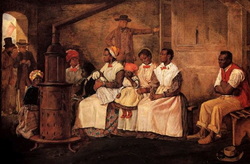
In a recent book, a paper in the journal Climatic Change, an article in The Guardian and another in Active History, historian Jean-François Mouhot of Georgetown University has popularized the idea that there are links between past slave societies and today's fossil fuel economies. Meanwhile, James Hansen, head of the NASA Goddard Institute for Space Studies, has recently received significant media attention for similarly suggesting that climate change is a moral issue on par with slavery. Mouhot is careful to admit that there are important differences between slave and fossil fuel economies: while slaves suffered directly, the human toll of global warming, while increasingly severe, is nevertheless indirect, removed from those who cause it. Then again, Mouhot concedes that the desire to injure or dehumanize hardly accompanies the burning of fossil fuels. More
Study: atmospheric CO2 change precedes temperature shift. April 4, 2012.
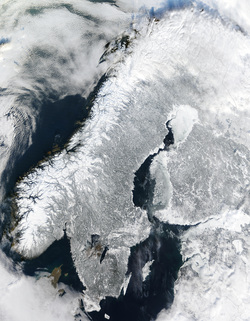
A team of researchers under Jeremy Shakun have published an article in the journal Nature that explores the relationship between atmospheric carbon dioxide and the world’s climate as the last great ice age came to an end. By looking at the distant past, the study reveals that the rise in carbon dioxide that accompanied this rapid shift slightly preceded increases in global temperature. “At the end of the last ice age, CO2 rose from about 180 parts per million (ppm) in the atmosphere to about 260; and today we’re at 392,” Shakun explained. “It’s not a small amount. Rising CO2 at the end of the ice age had a huge effect on global climate.” This finding appears to contradict an earlier article that relied on an analysis of Antarctic ice to conclude that changes in Antarctic temperatures actually preceded fluctuations in temperature. By suggesting that the link between changes in carbon dioxide concentrations were more loosely linked to shifts in global temperature, the study provided fodder for global warming sceptics. However, the new study’s more comprehensive analysis of the past, incorporating data from all over the world, undermines the hopeful findings of the previous article. By using sources from ice cores to plankton buried in sediment, Shakun’s team developed an explanation for both Antarctic and global records. Warming was first stimulated by the Milankovitch “wobble,” a minor shift in the nature of the Earth’s orbit around the sun that exposes the north to more sublight and triggered the collapse of major ice sheets. The torrents of fresh water that accompanied the melting of the hemisphere’s ice upset the North Atlantic’s ocean circulation, rebounding the heart welling up from the equator and warming the South. That triggered more changes to atmospheric and ocean circulation, releasing carbon dioxide from the Southern Ocean and, in turn, stimulating a sustained global rise in temperature that culminated in a much warmer climate. This critical and alarming study has received significant media attention, but it remains to be seen whether its findings will inspire changes to national and global environmental policies.
Past and future climates of the Near East and Europe. March 23, 2012.
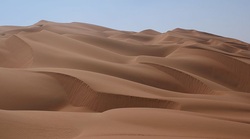
A team of researchers led by J. Lelieveld has published a study in the latest issue of Climatic Change that compares Intergovernmental Panel on Climate Change (IPCC) projections of the late twenty-first century climate in the Near East and Eastern Europe with 500-year records of its climatic past. By comparing these different datasets the study concludes that a gradual warming of 3.5-7 degrees Celsius is probable in the century between 1961-1990 and 2070-2099. Lelieveld and his fellow scholars acknowledge that the region is diverse, but with extreme climatic events already common the influence of a warmer climate will likely be especially severe. Daytime maximum temperatures will probably increase most rapidly in the northern periphery of the region, with hot summers that were extreme in the historical record becoming the norm by the conclusion of the twenty-first century. The study describes how precipitation in most seasons will likely decrease in southern Europe, while it may increase in the Arabian Gulf. Lelieveld and the other co-authors conclude that the climatic changes anticipated in the coming century will exacerbate heat stress, particularly in urban areas, while increasing shortages of fresh water in the Levant. Ultimately the article reveals with particular clarity how the consideration of climates undertaken by historical climatologists relates to a better understanding of a warmer future.
Key global temperature record updated. March 20, 2012.
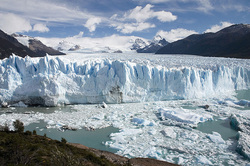
As published in the Journal of Geophysical Research, a team of scientists led by Colin Morice have updated HadCRUT, one of the three major global temperature records used by climatologists. Compiled by the Hadley Centre of the UK Met Office and the Climatic Research Unit at the University of East Anglia, HadCRUT dates back to 1850 and relies on direct observation. Although the previous version was plagued by a lack of Arctic sources, the new record fills that gap by using observations from over observation stations across the rapidly warming Arctic. Meanwhile, the more accurate electronic sensors ships now use to detect sea surface temperature revealed a systematic anomaly in the way data was collected in the past. Differences in buckets used aboard ships and variations in the locations where data was collected have were corrected as scientists recalculated the older data. However, while HadCRUT is now more accurate and more comprehensive than ever before, the bottom line remains unchanged. As described on BBC News, the new version agrees with the old in recording a warming of 0.75C (1.4F) since 1900.
Henry Thoreau's journals reveal consequences of global warming. March 14, 2012.
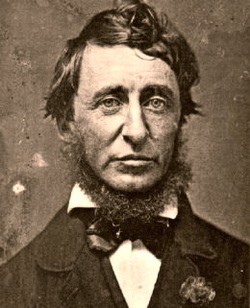
Richard Primack, a biologist at Boston University, has used the journals of Henry David Thoreau and another naturalist to reconstruct the flowering dates of common plant species in mid to late nineteenth century Massachusetts. Primack compared these records to today's flowering patterns in an article published in the February 2012 issue of the journal BioScience, arguing that 43 species now flower an average of 7 days earlier than they did in Thoreau's time. Thoreau wrote just after the conclusion of the Little Ice Age; since then temperatures have risen by 2.4 degrees Celsius in urban areas like metropolitan Boston, which includes Thoreau's Concord. While some species are capable of changing their flowering times in response to the shifting climate, their less flexible counterparts are vanishing from Massachusetts. In fact, Thoreau described some 21 different species of orchid, and just 6 remain today. "What that result tells us is climate change is not only affecting flowering time but also affecting the abundance of species in Concord," Primack concluded. "Warming temperature is causing some species to be winners and some species to be losers." Primack's study has received significant media attention, part of an ongoing surge in the profile of work related to historical climatology. One of the most fascinating aspects of that media attention: the reference to volunteers tracking seasonal events for the USA National Phenological Network, whose efforts may corroborate some Primack's claims regarding early flowering times in today's Massachusetts. Crunching numbers is often an important part of both scientific and historical research; outsourcing that work to eager volunteers on the internet offers some very exciting possibilities for future study.
Historical climatology's expanding media profile. March 2, 2012.
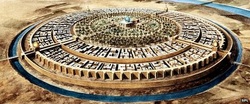
A new article by Richard Black of BBC News examines the development of the discipline of historical climatology “in the last couple of decades” by exploring how a team under Fernando Dominguez-Castro is reconstructing the weather of ancient Baghdad. The article describes some of the methodologies used by historical climatologists, and mentions sources from ship logbooks to parish ledgers of grape harvests. In recent years journalists from outlets like BBC news or The Guardian have devoted considerable attention to studies relevant to historical climatology, and it is encouraging to see that the workings of the discipline and the kind of work undertaken by its scholars have begun to find a voice in the mainstream media.
Is volcanism sufficient to explain the onset of the Little Ice Age? January 31, 2012.
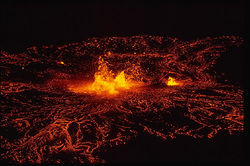
As has been documented on this website, two important questions have inspired interdisciplinary debates about the origin of the Little Ice Age. The first: when did it begin? The second: why did it endure for so long? Now an important new study purports to answer both questions. Publishing in the journal Geophysical Research Letters, a team under Gifford Miller have used vegetation entombed by expanding ice sheets to argue that increased volcanism was the primary culprit behind a global cooling between 1250 and 1300. That argument has been made before, but as the study authors admit explosive volcanoes, by releasing aerosol particles into the atmosphere, usually only cool the world's climate for a few years. Hence, they have been considered insufficient to explain the longevity of the Little Ice Age. However, Miller and his fellow researchers have used a transient climate model to reveal that at a time when Earth’s orbit stimulated low summer insolation across the Northern Hemisphere the initial 50-year episode of four sulphur-rich volcanic eruptions was sufficient to dramatically expand ice cap growth. Increased ice reflected more sunlight into space and weakened the Atlantic Gulf Stream, allowing colder temperatures to endure long after the volcanic eruptions ended. Unmentioned in most media reports: the authors do acknowledge that reduced solar radiation exacerbated the effects of volcanism, but conclude that a Little Ice Age would have occurred regardless of solar activity.
La Nina events may increase the likelihood of flu pandemics. January 17, 2012.
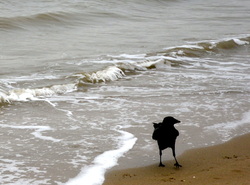
A new study in Proceedings of the National Academy of Sciences has uncovered that the migratory patterns of flu-carrying birds are susceptible to changes in the surface temperature of the eastern Pacific stimulated by La Nina events. Researchers examined the Spanish Flu beginning in 1918, the Asian Flu in 1957, the Hong Kong Flu of 1958 and the swine flu in 2009, revealing that all were preceded by La Nina events. These pandemics all featured new strains of the influenza virus to which people had not developed immunity, which typically emerge when existing strains exchange genetic material. There is no obvious or direct link to La Nina conditions, which are a regularly recurring feature of Earth's climate that does not necessary coincide with flu pandemics. Nevertheless, previous research has demonstrated that patterns of flights and stopovers in the migrations of some wild birds change between El Nino and La Nina years, suggesting that birds that usually don't mix can be brought together during La nina conditions, facilitating genetic exchange and, in turn, a devastating flu pandemic. Media articlesgenerated by the study have emphasized how the research lists La Nina conditions as just one possible influence behind the development of new pandemics. With so many scientific articles arguing for direct, unproblematic connections between, for example, warfare and climatic fluctuation, the more nuanced and more realistic approach of this paper and, even more remarkably, the media coverage it has received offers some hope.
NASA/Caltech computer model predicts dramatic changes to Earth's ecosystem by 2100. December 23, 2011.
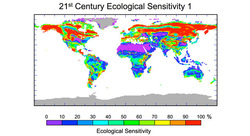
Credit: NASA/JPL-Caltech
A new computer model developed by a team of scientists under Jon Bergengren and published in the journal Climatic Change has suggested that by 2100 a warmer climate will influence change in plant communities covering nearly half the world's surface, while driving 40% from one major ecological type to another. Overall, biomes will likely migrate towards the poles and higher elevations. The study, which has received significant media attention, also predicts that the severing of ties between closely connected and often endangered plant and animal seasons will lower biodiversity and change Earth's natural cycles. The model employs the intermediate scenario described by the IPCC Fourth Assessment Report, which initial returns suggest has dramatically understated the future emissions of greenhouse gases. Of course, the essential weakness of these models rests in their inability to accommodate for changes in vegetation driven by other human activities. Furthermore, what is needed is a better understanding of how changes vegetation have accompanied climatic fluctuations in the past. When examining the influence of climatic changes historical climatologists generally explore relationships between human populations and prevailing weather, and shifts in flora or fauna are considered either for their influence on human beings or their ability to provide further insight into atmospheric developments. If changes in plant and animal life were considered important in their own right - and worthy of the kind of interdisciplinary insights historical climatologists can provide - our ability to model or, at least, conceptualize the future could be much improved.
Has climate's sensitivity to CO2 been overestimated? November 25, 2011.
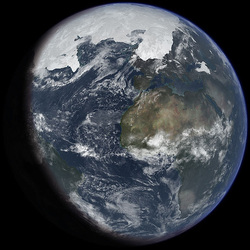
Rendering by Thomas J. Crowley, 2010.
A new study published in the journal Science by lead author Andreas Schmittner has used paleoscientific data to argue that the last Ice Age was not as cold as previously thought. That, in turn, suggests that global temperatures are less directly linked to atmospheric carbon dioxide than previously believed. The article, which has received extensive media attention, claims that a doubling of atmospheric carbon dioxide from pre-industrial levels would lead to a rise in the world's temperature of 1.7-2.6 degrees Celsius. In another article published in the same issue of Science Gabriele Hegerl and Tom Russon caution that Schmittner and his fellow researchers have developed just one model, and further research is required to support their results. As reported by the BBC, Climatologist Andrey Ganopolski also cautioned against reading those results as definitive, warning that the relationship between carbon dioxide and global temperatures is probably different during colder periods than in warmer decades. Ultimately, it is difficult to know what to make of these results. The idea of "using the past to predict the future," as Hegerl and Russon put it, is doubtless appealing to many historical climatologists, but the notion of unproblematically linking past temperatures to past CO2 concentrations seems simplistic when so many possible climatic stimuli exist. At first glance it seems better to use sources from both cooler and warmer periods in the less distant past that can also be supplemented with documentary evidence. Meanwhile, although the authors contend that their study does not reduce the need for urgent action to mitigate global warming they do claim that their results suggest a "lower probability of imminent extreme climatic change than previously thought." That attitude is worrisome given the upheaval the accompanied, for example, the most extreme phases of the Little Ice Age - when temperatures probably did not drop as much as 2 degrees Celsius below their previous average - and the sensitivity of modern agriculture to climatic fluctuations. Either way it's telling that the first scientific assessment to uncover links between modern extreme weather events and global warming - also described in the latest issue of Science - has not received nearly as much press.
Global warming, changing winds, and a cooler Europe? November 22, 2011.
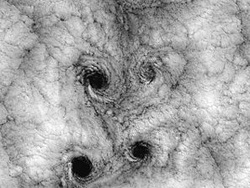
A new paper by S.D. Outten and I. Esau in the latest issue of the journal Climatic Change has supported recent studies suggesting that the rapid melting of polar ice, caused by the warming of the Arctic, can cause a decrease in zonal wind over Europe. By funnelling warmth from the Atlantic, persistent westerly winds are largely responsible for Europe's relatively mild climate. Hence, decreased zonal wind stimulated by global warming can actually cause the continent to cool. The world's temperatures are rising - indeed "global warming" remains a better term to describe the current climatic crisis than "climate change" - but Outten and Esau have highlighted how the new climatic regime of the coming century will mean different things for different societies. By uncovering links between changing patterns of prevailing wind and climatic fluctuations, the study also has potentially important ramifications for researchers exploring relationships between human and climatic histories.
Wind currents linked to Kawasaki Disease. November 12, 2011.
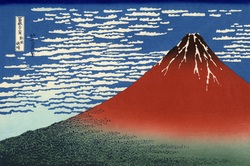
Kawasaki Disease is a childhood disease that is most common in Japan and can result in irreversible heart damage. Although the seasonal nature of the disease in Japan and other regions has long been understood, the reasons for changes in the spread of KD have remained shrouded in mystery. Now a team of researchers compiled by Jane Burns has published a paper in Nature Scientific Reports and received widespread media attention by revealing how fluctuations in the number of KD cases accompany shifts in patterns of prevailing wind. Climatologist Xavier Rodó, the study's first author, claims that, "the Japanese dataset revealed that a low number of KD cases were reported prior to the epidemics, a period coinciding with winds from the south which blew across Japan from the Pacific Ocean during the summer months." However, "the numbers rapidly mounted all over Japan when winds turned and blew from the northwest, a trajectory from the Asian continent. After the peaks, the winds again shifted, blowing from the south when the number of cases again decreased." These findings suggest an infectious agent is carried across the ocean by air currents in the upper troposphere, and offer hope for isolating the cause of the disease. The study also suggests new possibilities for students of the relationship between climate changes and human history, because shifts in wind currents have been associated with climatic fluctuations past and present. The need for research into changes in wind patterns - an important aspect of my own work - has never been more pressing.
Climate change, economic fluctuations, and warfare. November 1, 2011.
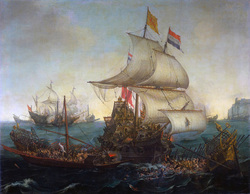
The latest issue of the Proceedings of the National Academy of Sciences contains an article that appears to link climatic fluctuations with European "golden" and "dark" ages in the early modern period. According to the authors, climatic cooling directly causes economic decline, which, in turn, leads to warfare, turbulence and, supposedly, "darkness." In reality, it's articles like these that highlight the need for interdisciplinary cooperation in all areas of climate research, perhaps especially those that look into the past. As described by historian Sam White, the article never actually explains exactly how these connections work, precisely because it uses methodology that historical climatologists abandoned decades ago. Climate never directly causes human history, because climatic fluctuations are only one complicated influence among the many that colour the relationship between human societies and their environment. That understanding, vital to historical climatology, is also important as we consider our warmer future. Conflict may intensify in the coming century not because a hotter climate determines it, but because many economic, political and cultural structures in today's world contribute to global warming while exacerbating its most problematic influences.
Does anthropogenic climate change precede global warming? October 18, 2011.
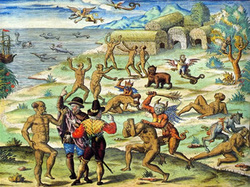
In a recent article in The Holocene and a subsequent paper given at this month’s Geological Society of America meeting, Richard Nevle presented evidence that apparently links the reforestation of the Americas following the European conquest of the New World with a reduction in atmospheric carbon dioxide and, ultimately, the coldest centuries of the Little Ice Age. Nevle’s work appears to support the general conclusions of William Ruddiman, who in 2003 argued that human beings have altered the world’s climate for millennia, largely through forest clearing. It’s worth noting that the warmer climatic regime that directly preceded the Little Ice Age waxed during an era of European deforestation, and that today’s climate is rapidly heating as forests in the southern hemisphere continue to shrink. Beyond the questions it raises within historical climatology and environmental history, the work of Nevle and Ruddiman is important for challenging the idea, so often raised by global warming skeptics, that humanity is incapable of altering the world's climate. Perhaps human beings, even in relatively modest numbers and well before the advent of industrialization, unwittingly changed the world’s environment on the grandest scale.
